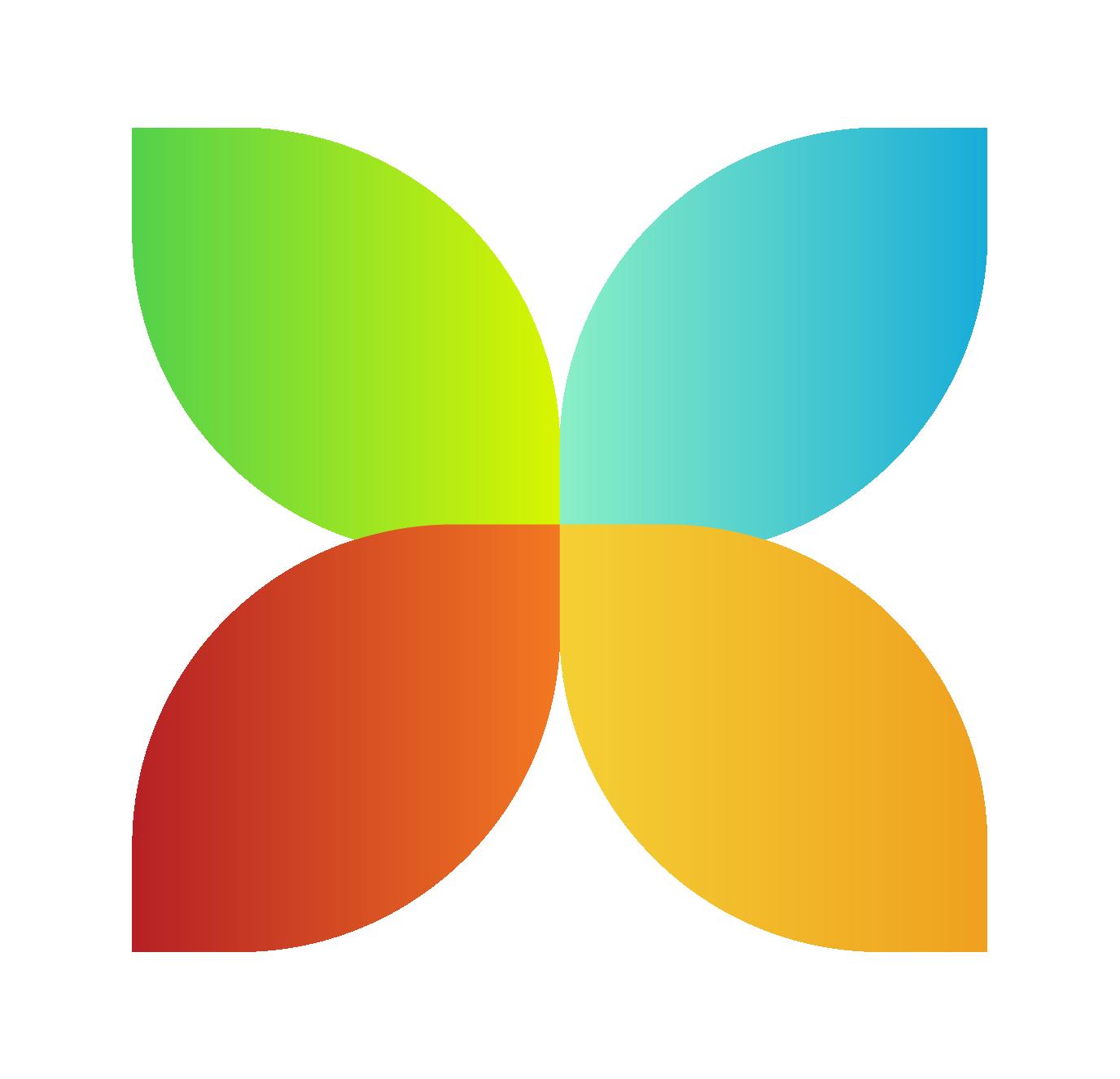






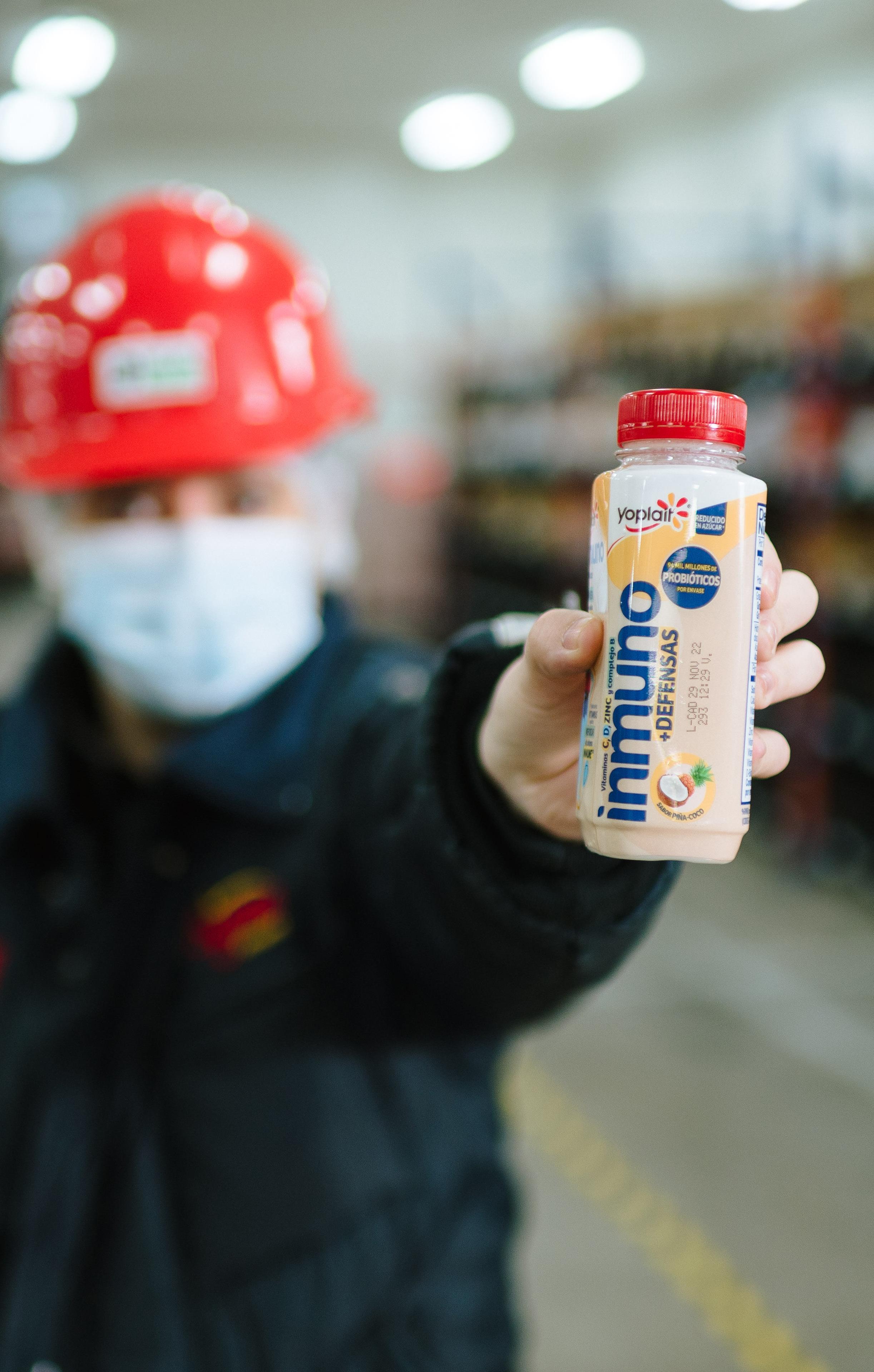

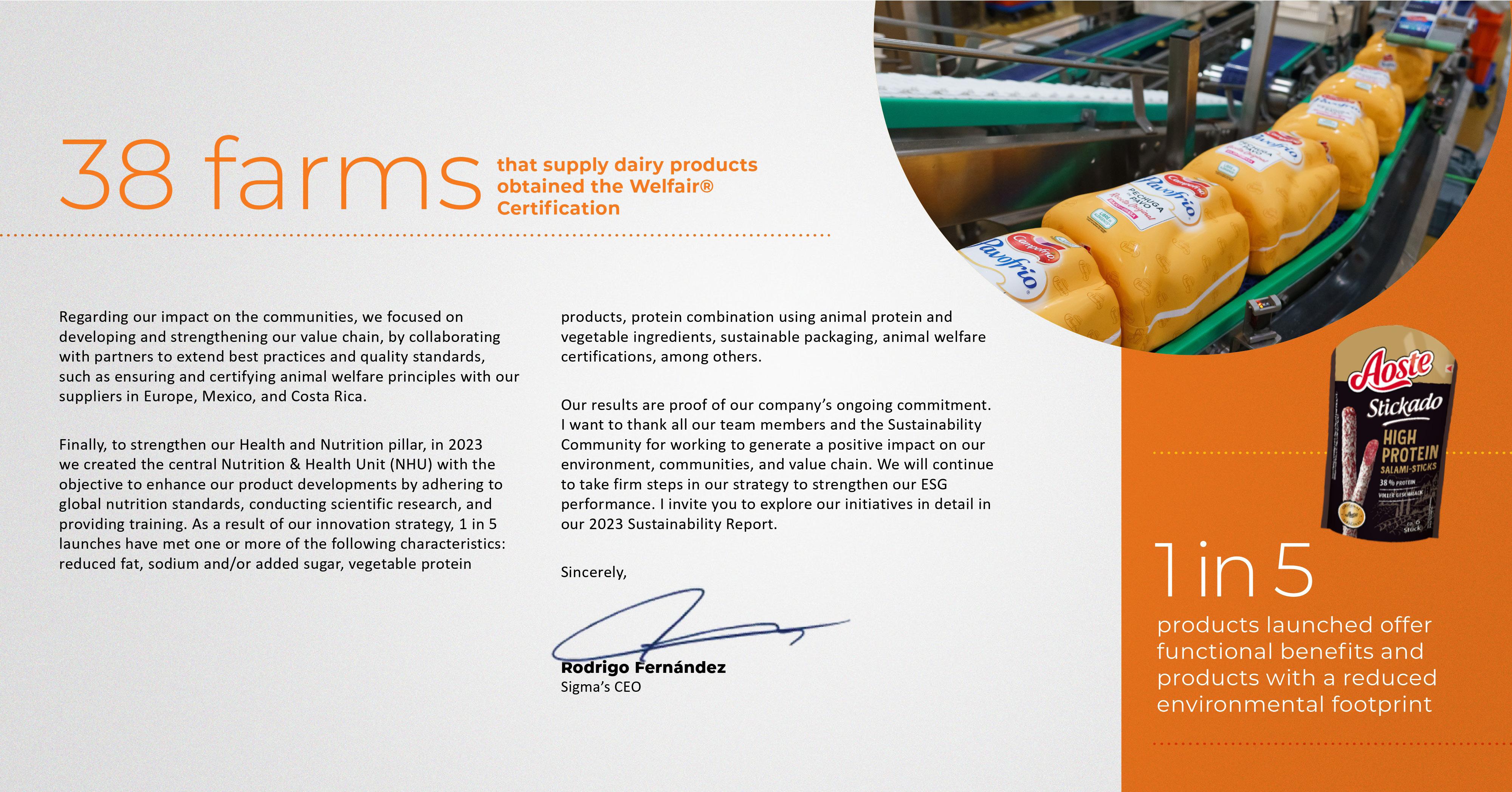

Dear readers and employees,
With great satisfaction I present to you our eighth Sustainability Report which reflect the growing number of teammates committed within our organization working towards the achievement of our Sustainability objectives.
I would like to highlight the efforts of the more than 260 members of our Sustainability Community, as well as those of the employees involved in the promotion and execution of projects that allow us to continuously improve and foster the exchange of ideas among our Operational Units.
It is also crucial to acknowledge the support of the Advisory Board and the Executive Committee, whom have strengthened our governance and supported the development of sustainable projects aligned to the vision of Sigma’s future.
Undoubtedly, collaborating with our technology partners and sustainability experts has also strengthened our management by enabling us to enhance our action plans, improve the accuracy of our key indicator measurements, and identify new opportunities to further improve our performance.
As we progress in our ESG goals, we are aware of the opportunities they enable for our organization. We seek to consolidate our position as a valuable and differentiated partner for consumers, customers, employees, investors, and the communities where we operate.
We cordially invite you to further explore the details of the projects presented in this 2023 Sustainability Report, and discover how each initiative positively contributes to our commitment to sustainability and excellence in our industry.

Gregorio de Haene Chief of Research, Innovation, and Sustainability Officer (CRISO)
With our commitment to maintain transparency towards our stakeholders, we present our 2023 Sustainability Report, which summarizes our Environmental, Social, and Governance efforts.
The result of this report reflects the great teamwork we do every day, both internally and across our value chain. Thank you all for contributing with your expertise and collaborative mindset.
In 2023, for the first year, we achieved the implementation of the Green Capex process, which will allow us to efficiently allocate resources to projects proposed by each business unit.
In terms of our value chain, during 2023 we strengthened our efforts to monitor our suppliers’ responsible practices through the CDP and the Supplier Assessment Questionnaire. These tools helped us identify areas of opportunity where we can work together, and providing us clear evaluations that guide the selection of our suppliers and raw materials we use for our product portfolio.
Finally, I hope we all feel proud of the achievements outlined in this 2023 Sustainability Report. Thank you for your daily efforts and contributions to our progress towards a more sustainable future. It is very motivating to work with such a committed and proactive team.


Rodolfo Brajcich Nutrition & Sustainability Director

Sigma is a global company dedicated to offering communities’ favorite foods. It has been a subsidiary of ALFA since 1980 and has more than 100 recognized brands in multiple market categories and segments, including packaged meats, cheese, yogurt, alternative protein products, and other refrigerated and frozen foods.
Sigma is present in 17 countries, operating 64 plants, 179 distribution centers, and 2 research centers. With a focus on innovation, we serve and satisfy consumers’ changing demands. Our global presence allows us to share best practices across regions and business lines, optimizing the use of resources and increasing productivity levels. In addition, we consider sustainability as an enabler of our business strategy to advance in the integration of Environmental, Social, and Governance criteria in our everyday decision-making.
Our product portfolio includes the following categories:





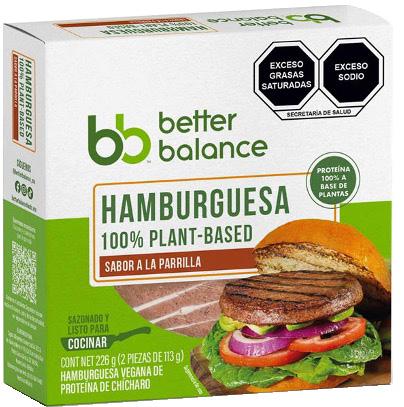

Our company key facts:
17 countries with Sigma operations 179 distribution centers
46,000+ employees from 60+ nationalities
64 manufacturing facilities
8,000+ vehicles 2 research centers
680,000+ points of sale



14 brands with annual net sales of over US $100 million each
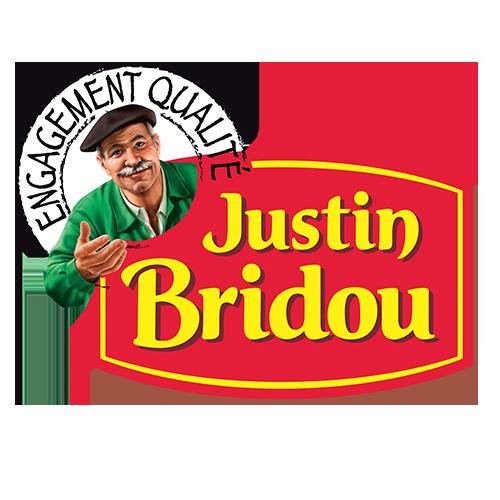








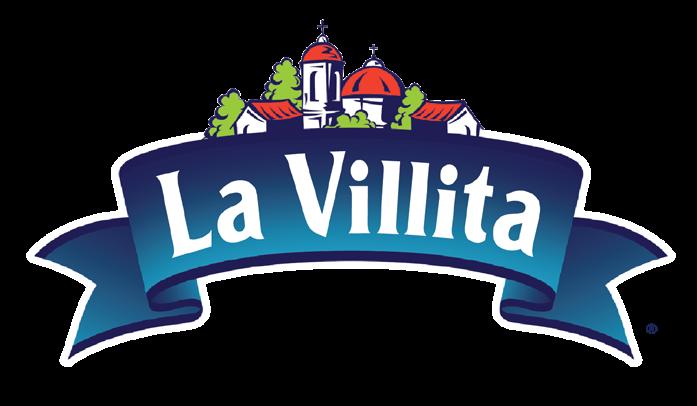




All-time high annual consolidated Volume, Revenues, and EBITDA consecutive quarter

US $893 million in EBITDA, a 37% increase year-over-year, driven by Mexico and Europe

US $8.5 billion in Revenues:
1.8 kiloton of food sold
11 of year-over-year revenue growth, supported by record fourth quarter volume

To bring communities everywhere favorite foods to love

We improve our consumers’ daily lives by creating and serving favorite foods they love.

Innovate together
We explore and learn to generate new opportunities for value creation.

Deliver with integrity
We deliver results with ethics and outstanding execution.
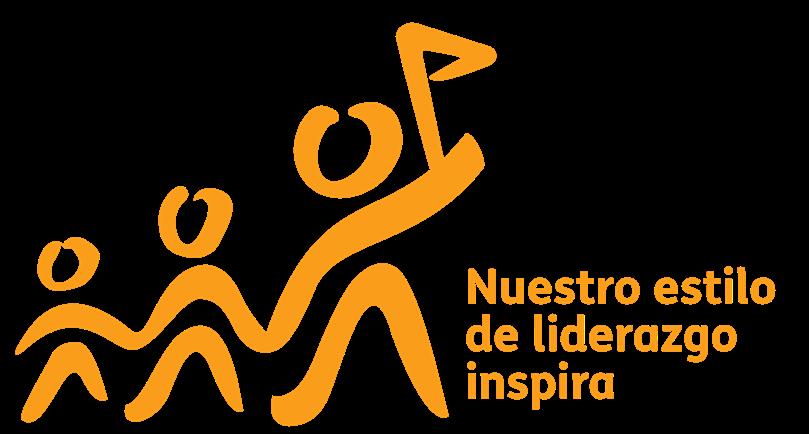
Lead to inspire
We lead by example, inspiring and motivating others to maximize their full potential.
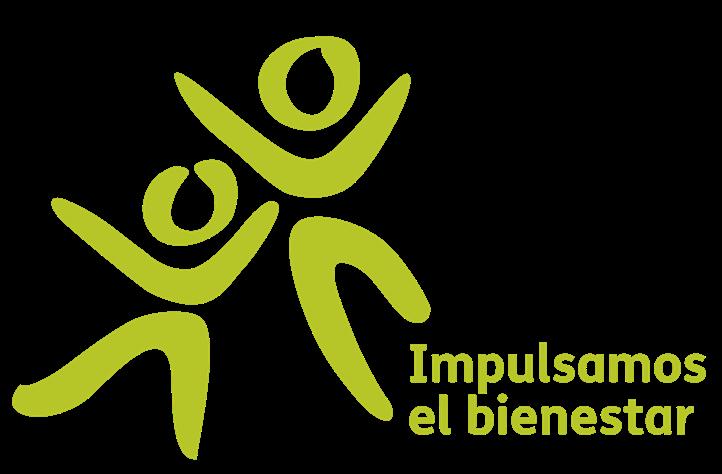
We promote quality of life by taking care of our people and communities.
Operation in 17 countries: Mexico, United States, Spain, France, Belgium, the Netherlands, Portugal, Germany, Romania, Costa Rica, Guatemala, Nicaragua, Honduras, Peru, El Salvador, Ecuador, and the Dominican Republic.














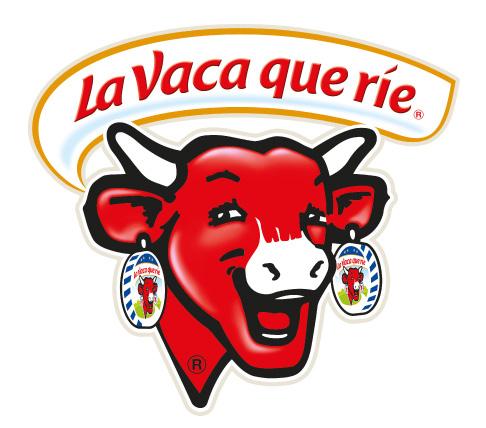

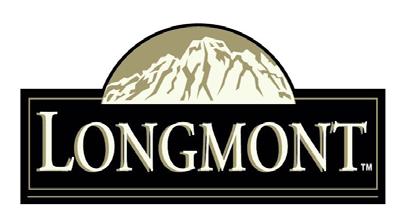











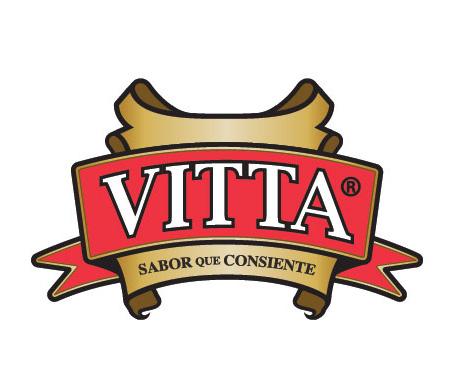

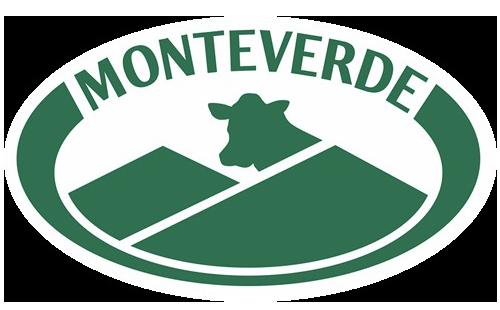


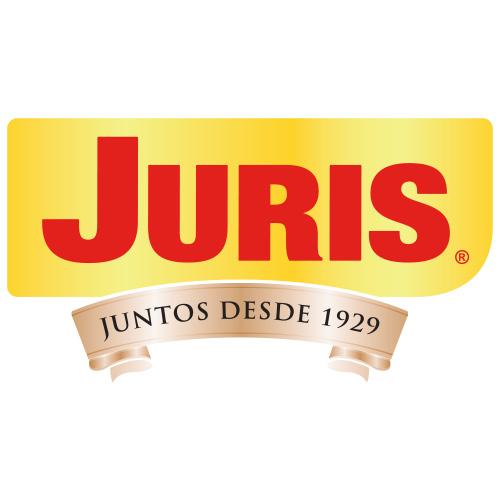


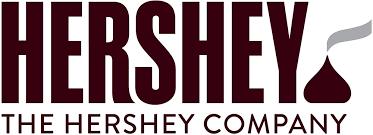







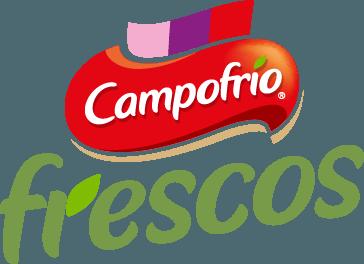


Sustainability is a crucial part of our business strategy. During 2023, we continued to implement Environmental, Social, and Governance (ESG) initiatives and actively promoted our team’s engagement. Our sustainability framework guides us in our work to generate solutions to the global challenges we face.
Our Sustainability Strategy is based on 4 pillars


We reduce our environmental impact by using natural resources more efficiently We establish conditions that motivate and make it easier for people to adopt habits that improve their quality of life




We promote healthy lifestyles through innovative and highquality products We create economic and social value through our strategic practices and share them to stimulate development and strengthen our value chain


These pillars are the foundation that supports our strategy and are the result of a detailed study of the needs and interests of our stakeholders, combined with what we identify as challenges and opportunities from an internal Sigma perspective. By considering all these variables within our sustainability framework, we aim to allocate our resources to the initiatives that are most relevant for our long-term growth.
We are in constant communication with our stakeholders through different channels to listen to their concerns and identify opportunities, as well as
Employees
Having adequate labor conditions to develop in the best possible way at work
Consumers Food offering in compliance with expectations and dietary needs
Attract the best talent and promote their wellbeing, professional development, and motivation
Delight them with a portfolio of innovative and nutritional products
Intranet, Transparency Helpline, organizational climate survey, Employee Service Program, website, newsletter, town halls, and business unit forums
Contact centers, focus groups, satisfaction surveys, website, social media, and sales channels
Recurring Annual
Recurring


Customers Products in compliance with consumers’ expectations and dietary needs
Community Safety and good quality of life
Suppliers
Create business partnerships that enable growth
Exceed their expectations through value propositions and sharing of best practices
Carry out safe and sustainable operations and actively participate in their development
Maintain a long-lasting, mutually beneficial, and collaborative relationship
Contact centers, Client Excellency Program, satisfaction survey, Transparency Helpline, website, and sales force
Website, social networks, Transparency Helpline, contact centers, events
Evaluation and training programs, contact centers, Transparency Helpline, social media, and Procurement team
ALFA’s Shareholders Meeting, quarterly reports, website, social media, Transparency Helpline, Sigma’s and ALFA’s IR teams
Recurring
Investors and analysts
Authorities and regulators
Having transparent and updated information for decision-making
Act in a proper and transparent manner
Share operating and financial results, that are sustainable over time, and relevant to the market
Comply with applicable regulations and establish partnerships for sustainable development
Quarterly and annual financial reports, non-financial reports, press releases, and media coverage
Recurring
Recurring Monthly Annual
Recurring Quarterly Annual
Recurring Quarterly Annual
Associations, chambers, meetings
Variable, upon request or occasion
Associations and NGOs
Engage with strategic partners and collaborate to achieve mutual objectives
Participate and collaborate effectively for social, scientific, and technological development
Industry forums, meetings, committee participation, social media, and website
Variable, upon request or occasion
We updated our materiality matrix in 2020, including the most relevant aspects for Sigma and its various stakeholders, thereby defining an efficient strategy for the future. As part of the materiality analysis exercise, we considered Environmental, Social, and Governance topics that are relevant to the industry in which we operate and align with the UN Sustainable Development Goals.
Material Topics


Health & Nutrition
A. Food safety and quality
B. Healthy and nutritional food
C. Ending food waste



D. Innovation, research, development, and scientific collaboration • Innovation • Packaging
Shared Value
E. Ethics and integrity
F. Sustainable procurement and value chain management
G. Economic performance


Wellbeing
H. Employee health, safety, wellbeing, and work-life balance
I. Diversity, equal opportunity, and inclusion
J. Employee training and development
K. Organizational culture and work environment

Environment
L. Climate action
M. Water management
N. Circular economy and sustainable packaging
O. Clean and efficient energy

Departments
• Quality and Food Safety • Health and Nutrition
• Investor Relations
• Food Donations
• Health and Safety
• Wellbeing, Inclusion, and Volunteering
• Talent Development
• Human Resources
• Company Culture • Operations • Energy
Procurement
• Internal Control
• Product and Process Development
• Corporate Social Responsibility
We have been a signatory of the United Nations Global Compact since 2021. As part of our commitment to this initiative, we have mapped our contributions to each of the SDGs. Action pillars
Contribution to the UN’s 2030 Agenda

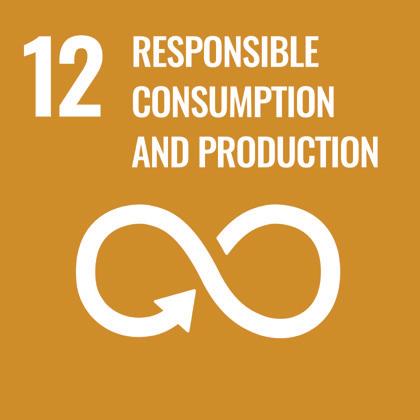


Commitments
2023 Achievements


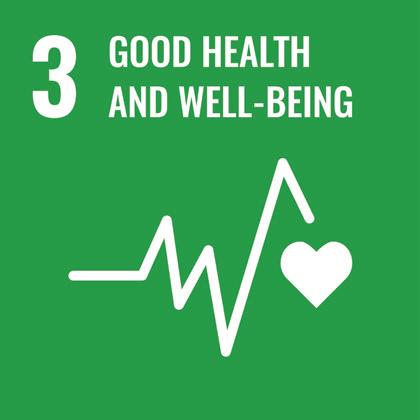

We reduce our environmental impact by using natural resources more efficiently.




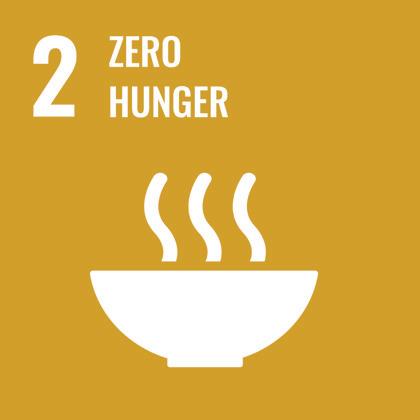

We establish conditions that motivate and make it easier for people to adopt habits that improve their quality of life.
• 1,638+ tons of virgin plastic avoided in our packaging in 2023
• 17% reduction of water usage per ton of food produced (compared to 2018)
• 17% reduction of CO2eq emissions related to our plants and transportation fleet per ton of food produced (compared to 2015)
• US $7.1 millon invested in initiatives related to the mitigation of environmental impacts
• 29.5 hours of training given on average to each employee
• 44% reduction in accident rate (compared to 2018)
• 11% of employees participating in volunteering initiatives
• US $16.5 millon invested in employee wellbeing initiatives






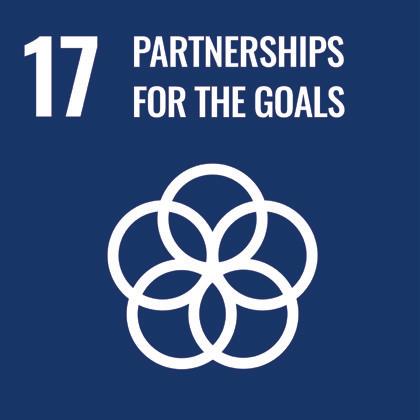
We promote healthy lifestyles through our innovative and high-quality product offering.
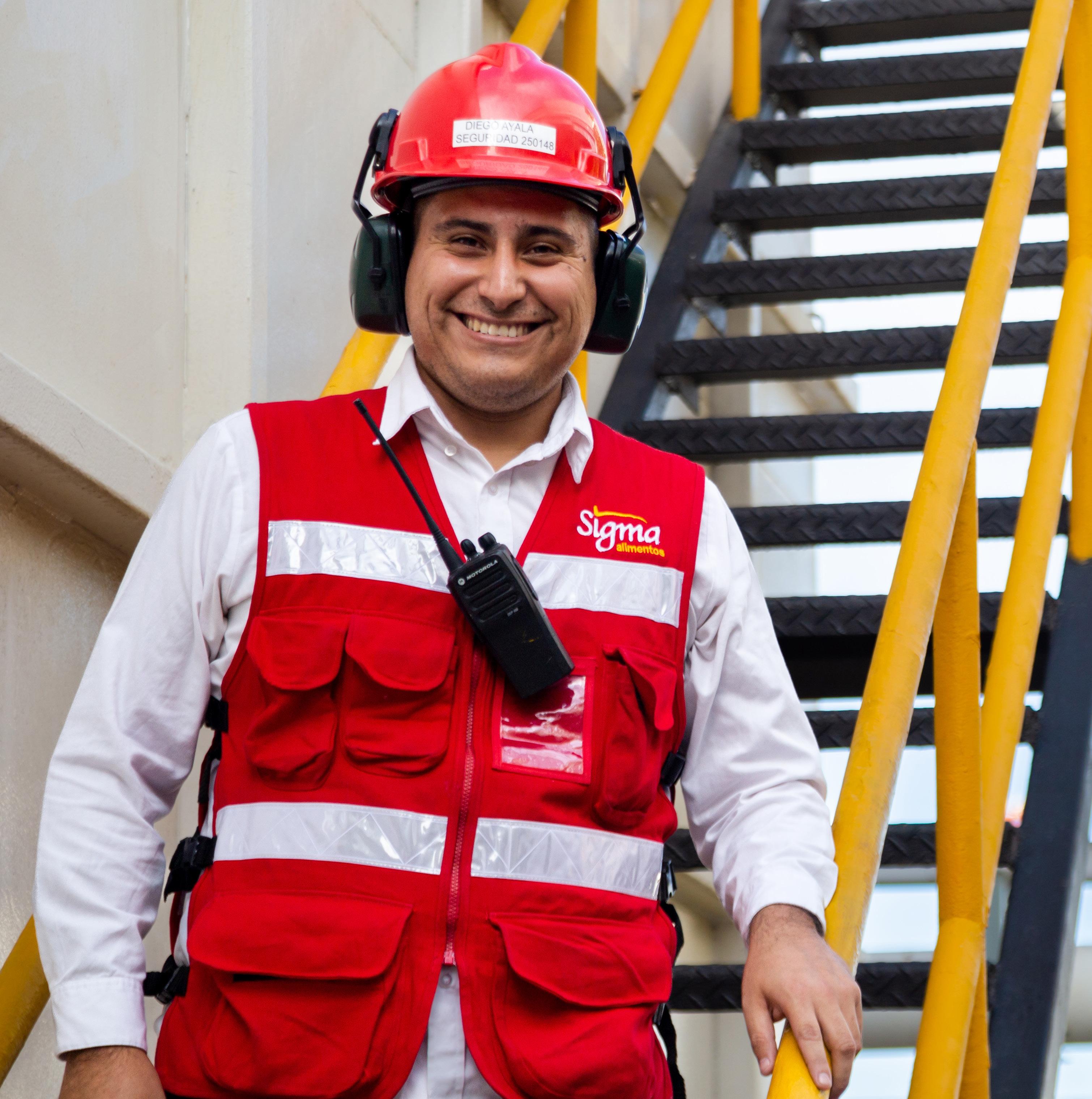
We create economic and social value through our practices and share them to promote the development and strengthening of our value chain.
• The Global Nutrition and Health Unit was created
• US $33 millon invested in Research and Development
• 93% of our plants are GFSI (Global Food Safety Initiative) certified
• 1,950+ new products launched in the last 36 months
• 10% of revenues come from innovations
• 31 products obtained animal welfare certifications in Mexico and Costa Rica
• 38 farms that supply dairy to Sigma in Mexico and Costa Rica obtained the Welfair® Certification, making us pioneers at obtaining this certification in these countries
• 2 of our production plants were certified with Welfair®: Sabinas in Mexico and Cartago in Costa Rica
• 21% of suppliers with responsible practices (covering 80% of the purchase)
• 23,712 tons of cumulative food donated since 2015







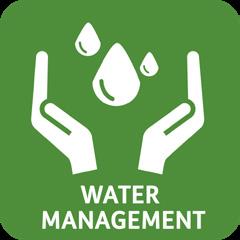

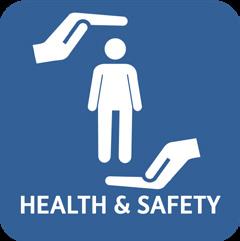













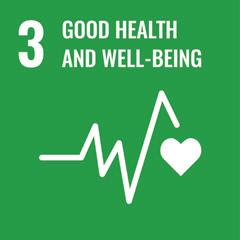
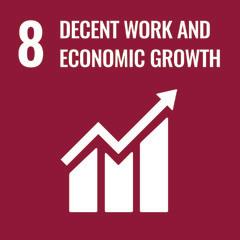
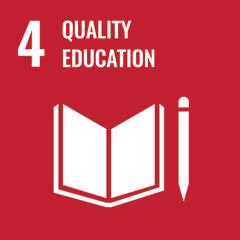












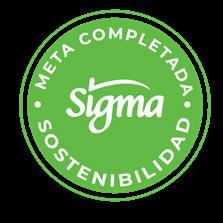



Within these four strategic pillars, and considering our material topics, we focus on four transformational topics for long-term sustainable growth. These are:

Evolve our direct sources and consumption of energy towards decarbonization

Engage with the value chain to ensure sustainability compliance and benchmark best practices

Execute the global water stewardship strategy to ensure proper use of the resource
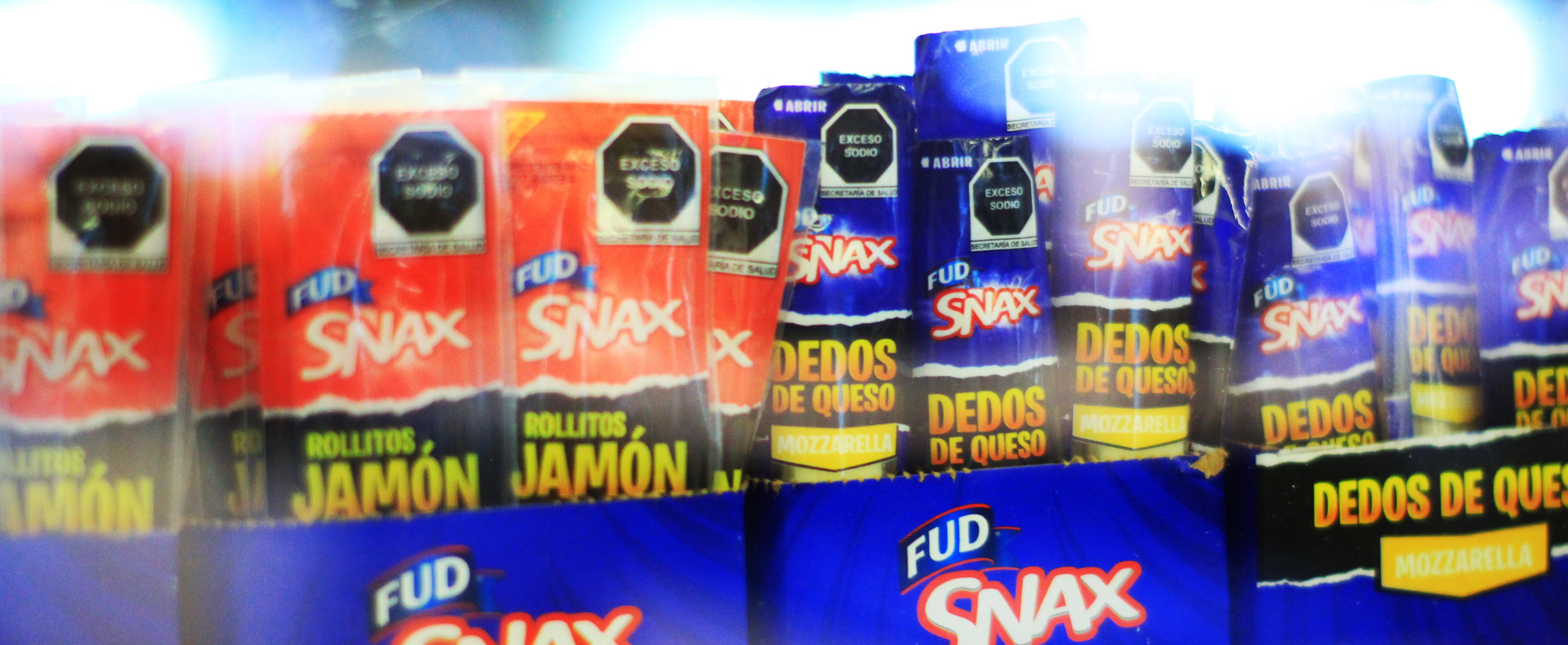
Promote a circular economy to minimize the environmental impact of our products
We actively participate in third party assessments to improve our sustainable performance and manage our ESG risks in alignment with stakeholders’ requirements. In addition, we participate in questionnaires sent directly by our customers and investors, providing transparency about our practices, and identifying areas of opportunity in which we can collaborate.
In 2023, we completed the S&P Corporate Sustainability Assessment (CSA) benchmark, the Climate Change (including Supplier Engagement) and Water sections of the Carbon Disclosure Project (CDP). Additionally, we were evaluated by Sustainalytics, and have been rated with a medium ESG risk. Overall, we have made important progress in our results and aim to continue improving. We have clear action plans in place to reduce sustainability risks and improve its management.

Supplier
The 2023 Global Sustainability Forum brought together employees from all our geographies to learn about our main achievements and how the company’s 2025 Sustainability Commitments can be accomplished.
We celebrated Sigma’s Sustainability Week, in which employees proactively adopted actions aligned to the United Nations Sustainable Development Goals. In the sixth edition, employees and their families attended workshops and carried out actions for the environment and the community, including donations, mentoring, recycling actions, and dialogues with women in leadership positions, among others.
Through the Sustainability Newsletter, we create awareness among our employees and communicate the results of our efforts. We also recognize the work of all those who contributed to the strategy and encourage them to continue promoting new initiatives.
The contribution of the different business areas is essential to achieving our goals, which is why in 2023 we implemented workshops with internal areas to increase Sustainability awareness at Sigma. This year, we delivered workshop sessions to the Global Procurement and Supply Chain regional teams. The positive response encourages us to create more workshops in the future.





We reduce our environmental impact by using natural resources more efficiently.
Material topics
• Climate action
• Clean and efficient energy
• Water management
• Circular economy and sustainable packaging
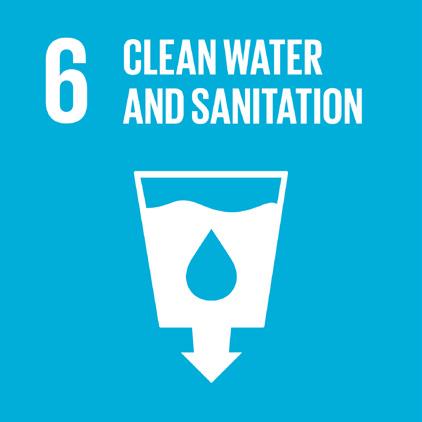



1,638+ tons of virgin plastic avoided in our packaging in 2023
GRI 2-23, 2-24
We strive to ensure that our operations adhere to the best international practices, which help us identify, evaluate, control, and reduce potential environmental risks and implement projects to efficiently manage resources throughout our operations.
17% reduction of water usage per ton of food produced compared to 2018 17% reduction in CO 2eq emissions related to our plants and transportation fleet per ton of food produced compared to 2015
US $7.1 million invested in initiatives related to the mitigation of environmental impacts
Environmental management
• Environmental risk assessment and monitoring
• Environmental Community
• Commitment with Science Based Targets Initiative
Production Packaging Logistics and distribution
• Climate Action Program
• Cooling Master Plan
• Global Water Management Program
• Sustainable Packaging Program
• Refrigerant Conversion Program
• Sustainability in Motion Program
• Distribution Route Optimization
Supply chain
• Sustainable Value Chain Plan
• Life Cycle Assessment of our products
Aware of the climate crisis worldwide, and with the goal of identifying opportunities within our organization, we use digital tools that allow us to monitor physical and transition risks. Beyond this, we conduct comprehensive on-site analyses on a regular basis to understand all the variables we are exposed to. In response to the identified risks, we implement mitigation measures such as our Climate Action Program and Global Water Management Program.
Tools
Risks identified
Aqueduct Physical risk: water stress, drought risks, and fluvial and pluvial flood risks
Waterplan ® Physical risk: water quality, drought risks, flood risks, regulations and reputation
Climanomics ® Physical and transition risk: river and storm flooding, extreme temperatures, coastal flooding, droughts, fires, cyclones, water stress, carbon pricing, regulatory monitoring, reputation, market disruptions, or technology limitations


We implement continuous improvement processes in environmental management in all of our operations.
We adhere to applicable environmental regulations:
Environmental certifications and standards ISO 14001 ISO 50001 Retray Process Certification
Global environmental management standard
Spain: Jamones Burgaleses, Bureba, and Villaverde plants
Romania: Pitesti plant
Global energy management standard Certification that verifies compliance with traceability requirements and the percentage of recycled material content in PET packaging
France: Aoste, Maclas, and Saint Symphorien plants
Our Environmental Community is formed by more than 130 Sigma members in Mexico, Spain, and Latin America. This group aims to cultivate a culture of environmental excellence by focusing on reducing our resource consumption, which brings environmental and economic benefits.
During sessions held quarterly, the Community shares projects, experiences, and ideas with various internal teams to reduce water and energy consumption. This enables the standardization and replication of initiatives across other sites, areas, and regions.

Spain: Ólvega Pizzas plant
In November 2023, the Environmental Community held its annual meeting where 13 projects focused on sustainable water, fuel, and electricity solutions were presented.
Occidente plant in Mexico: water recovery system used in multimedia filters. Reusing recovered water for activities such as laundry and watering green areas.


In addition to these actions, our regional teams are working on identifying and implementing projects that contribute to achieving our commitments.
Going forward, we will seek to expand the Environmental Community to the United States and Europe due to the good results obtained so far. It will always be our goal to share initiatives and best practices in environmental management.

Sangolquí plant in Ecuador: Reduction of steam consumption by optimizing operating pressure in cooking equipment.

Sabinas plant in Mexico: installation of a compressed air booster to reduce compressor pressure, resulting in a reduction of electric power consumption.

In 2021, we signed our commitment letter with the Science Based Targets Initiative (SBTi), and in May 2023, we obtained the approval for our emission reduction targets. These targets are aligned with the decarbonization required to limit the global temperature increase below 2 degrees Celsius, structured as follows:
• Reduce 20% our Scope 1 and 2 emissions by 2027, baseline 2019
• Reduce 9.8% our Scope 3 emissions by 2027, baseline 2019


To develop our SBTi strategy, we began by studying and understanding our carbon footprint in depth. Identifying the different emission sources within each scope, and their relevance to the total footprint calculation.
To validate our calculations, in 2023 we conducted a limited verification process of our scope 1 and 2 emissions for 2019 with Carbon Trust. This analysis included a detailed assessment of our processes and controls for data collection, as well as a gap analysis of the existing inventory. The exercise concluded with the achievement of ISO 14064-3: Organizational Carbon Footprint Certification.

For our scope 3 emissions calculation, 12 of the 15 categories established by the GHG Protocol are considered. It is important to keep in mind that the categories that are excluded in our inventory are not applicable to our processes (Category 10: transformation of products sold, Category 13: assets leased in later stages, and Category 14: franchises).
We are currently undergoing a historical emissions review and accounting process with South Pole. Upon completion, the company will begin an external verification process to get independent assurance for its 2019 and 2022 inventory calculations. It is important to mention that around 95% of our carbon footprint comes from the Category 1: purchased goods/services and Category 4: upstream transport and distribution. Therefore, reducing the carbon footprint in our supply chain is a priority to meet our decarbonization commitments.

Initiatives we have deployed to achieve our Science Based Targets objectives, along with some examples of the actions we’ve taken:
Initiatives to achieve the goals (scopes 1 & 2)
Use of cleaner fuels
Implemented actions
• Migration from fossil to cleaner fuels
• Biomass systems
• Use of organic waste for biogas generation
Use of renewable electricity (onsite, PPA 3 , VPPA4)
Migration to natural or low GWP5 refrigerants
Sustainable fleet
Initiatives to achieve the goals (scope 3)
Improve how we measure scope 3 inventory
Clean energy agreements, for example:
• Renewable energy agreement in Peru
• Wind energy supply agreement in Mexico
• More than 30,000 solar panels installed in Dominican Republic, Mexico, and Europe
• Refrigeration systems automation
• Migration to natural or low GWP refrigerants
• Electric vehicles pilot in Mexico
• Incorporation of electric vehicles in Spain
Implemented actions
• Gap analysis of our first inventory (2019)
• Identification and assignment of responsibilities to obtain correct and complete information
• Improved data management and calculations with defined templates and a new software to collect data
• Licenses for access to internationally recognized emission factor databases that contribute to greater accuracy in calculations
• Interaction with more than 150 suppliers to know their exact locations and standardize measurement units
• External limited assurance verification for emissions inventory
Initiatives with suppliers that impact the agricultural and forestry sectors
Initiatives with suppliers in other environmental sectors
The future of our decarbonization strategy
• During 2024 we will continue our verification process for our emissions inventory and obtain external assurance for the 2022 calculations.

• Mapping sustainable practices of key suppliers and monitoring their emission reduction targets
• Collaborating with suppliers to identify and implement environmental projects
• Methanization projects to transform manure into biogas and organic fertilizers
• Supplements in dairy cattle feed to reduce enteric emissions
• New options for recyclable content in our plastics
• Valorizing both organic and inorganic waste from our operations
• Sustainable fuels and technologies for external transportation

• The new FLAG (Forest, Land, and Agriculture) targets that SBTi introduced in 2023 for companies with forest, land, and agriculture-related emissions represent a new opportunity. Considering our emission reduction percentages, we plan to submit these new targets.
GRI 3-3: Climate action || 305-5
SASB FB-MP-110a.2
SDG 7: Goal 7.2 || 9: Goals 9.2, 9.4 || 13: Goals 13.2, 13.3

Percentage reduction in CO2 eq emissions related to our plants and transportation fleet, per ton of food produced (compared to 2015).
Led by our central Energy and Water team, the Climate Action Program operates under the following lines of action:
1. Increase efficiency in energy consumption
2. Maximize the use of electricity from cleaner or renewable sources
3. Expand the use of cleaner fuels
4. Employ new technologies in our distribution fleet
5. Transition to refrigerants with low or zero global warming potential
Our CDP score for Climate Change in 2023 remained at B
At Sigma, we are committed to being environmentally responsible
In Mexico, we began a pilot test with solar collectors at our IASSA plant in Merida. This technology captures thermal solar energy, allowing us to reduce the use of natural gas for heating water in our operations. Based on the results of this test, we estimate a 10% reduction in the plant’s fuel consumption.
Additionally, at our Atitalaquia plant in Hidalgo, we installed a cogeneration project with a capacity of 3 MW. Through three cogeneration turbines, we will generate energy on-site by combusting natural gas. The residual heat will be utilized to produce steam and hot water, avoiding approximately 1,600 tons of CO 2 equivalent emissions annually.
In Portugal, our Rio Maior plant received a €3 million incentive from the Portuguese government for committing to decarbonize 30% of its operations within two years. We plan to achieve this through three lines of action: installation and use of solar panels, use of residual biomass as fuel, and the migration to natural refrigerants.
In the United States, we planned our environmental strategy to reduce our impact. Our focus will be on migrating to clean energy, transitioning to natural refrigerants, and identifying other areas of opportunity for low-impact electricity usage.
In Ecuador, the Sangolquí plant received approval for the residual biomass project, which will eliminate 100% of the use of diesel.
Led by our Central Energy and Water team, our Refrigeration Program focuses on two pillars:
1. Migration to natural refrigerants or low global warming potential (GWP)
2. Regular maintenance and monitoring to prevent gas leaks
During 2023, we made the following efforts in refrigeration:
In France, at our Aoste Plant, we implemented the Cooling Master Plan, which focuses on the migration from conventional refrigerants to natural refrigerants such as carbon dioxide and ammonia, which allowed us to reduce emissions in electricity and gas consumption by 1,300 tons of CO 2 equivalent.
In the United States, 67% of our operations use natural refrigerants. Therefore, we focus on regular maintenance and monitoring to prevent leaks.
We evaluate competitive refrigeration models and systems to achieve exceptional performance in our fleet while maintaining optimal conditions to ensure food safety and freshness. We work on optimizing our distribution routes to improve fuel efficiency and increase vehicle capacity usage.
Our Sustainability in Motion program has two workstreams:
1. Electric vehicles and refrigeration systems
2. Increased combustion system efficiency and reduction in the use of heavy fuels.
In Mexico, we incorporated 19 fully electric vehicles to our fleet in 2023, bringing the total number to 40 vehicles for last-mile delivery. Nine of these electric vehicles have a refrigeration system with a lower environmental impact. These efforts are aligned with our emissions-reduction strategy and encourage the adoption of cleaner technologies in our operations. We will conduct pilot tests to assess unit performance and determine the most efficient path towards the electrification of our fleet.

Furthermore, we began a pilot project involving 3 vehicles using hydrogen to optimize combustion in our fleet and reduce diesel consumption. If the expected results are achieved, we intent to replicate this initiative throughout Latin America and the United States.
Following a pilot project, in 2024, Campofrío Spain incorporates to its fleet an electric truck to service two of our main plants: Villaverde in Madrid, and Torrijos in Toledo.

Over 95% of our total emissions inventory relate to scope 3 emissions. Therefore, for Sigma, it is important to collaborate with the value chain on carbon footprint reduction projects, which are essential to achieving our decarbonization ambitions.
Led by our central Sustainable Value Chain and Circular Economy area, the following lines of action have been defined:
1. Evaluate suppliers on Environmental, Social, and Governance (ESG) topics
2. Calculate scope 3 emissions inventory
3. Identify projects with the greatest emission reduction potential
In order to get a diagnosis that allows us to broaden our understanding of our value chain on ESG aspects, we evaluate our suppliers through questionnaires. For more details on our progress, we invite you to read the Shared Value chapter of this report.
Given the complexity of scope 3 categories, undertaking an accurate inventory takes time, resources, and effort. We are currently in the process of reviewing and accounting for historical emissions from 2019 to 2023 with South Pole, an expert environmental consulting firm.
To strengthen our scope 3 emissions inventory, we are using globally recognized databases to provide accurate emission factors by geographic area, as well as by material type. We have worked with our procurement team to get more supplier level detail, which will allow us to identify and bring forward strategic alliances.
The scope 3 inventory results help us prioritize pilot projects that will reach higher emission reductions. We are analyzing new technologies focused on Category 1: purchased goods and services, which represents about 92% of our scope 3 emissions.
We began the implementation of biodigesters with two producers of the Fomento Lechero program in Jalisco and Aguascalientes in Mexico, which will be fulfilled in 2024. The biodigester works by revalorizing the methane gas from animal manure, obtaining two by-products: biogas, which will replace 100% of the LP gas needed by the farms, and organic fertilizer “biol”, which will replace 90% of the chemical fertilizers used to feed the animals. This project is being carried out in alliance with an experienced third party and will achieve a reduction of more than 450 ton of CO 2 equivalent per year.
We maintain ISO 20400 Sustainable procurement certification for nonmeat raw materials in Europe


Reinforcing our commitment to being more transparent with the consumer, in 2023 we began conducting the first analysis to measure the environmental impact of our products. This is done through Life Cycle Assessments (LCA) that consider the resources and processes required for raw material extraction, material processing, and product manufacturing. With a “cradle-to-gate” scope, we get a better perspective on our supply chain decisions to focus resources on projects with greater environmental benefit and reflect the results of our products.
In this first phase, 3 of the 17 environmental impact categories will be evaluated: climate change, water consumption, and land use.
The methodology for these studies is aligned with the ISO 14044 standard and consists of:
• Product selection and scope definition
• Process traceability
• Life cycle inventory (LCI)
• Life cycle impact assessment
• LCA reporting
These analyses will provide us with a clear vision to make decisions at the product level that will lead us towards decarbonization and responsible management of the natural resources on which we depend.

• We will test new technologies to anticipate the effects of climate change and new regulations through emissions mitigation alternatives for the upcoming years.
• We will focus on the preservation of the natural resources by promoting biodiversity protection and deforestation-free supply chain.
• We will continue to collaborate with the value chain to promote projects and increase awareness of climate action.
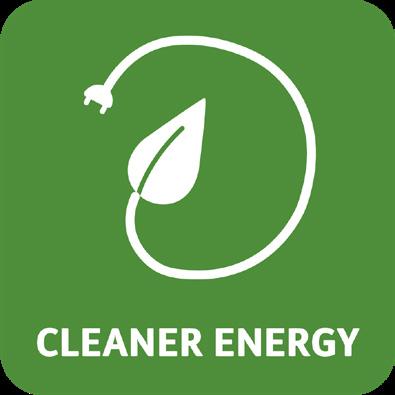
Percentage of electricity used in our plants coming from cleaner or renewable sources.*

In our operations, we leverage control systems and new technologies which allow us to optimize our energy consumption and use energy sources with reduced environmental impact.
Cleaner or renewable sources, such as wind, solar, or cogeneration, accounted for more than 66% of our electricity consumption in 2023. We strive to improve the consumption efficiency of our operations by investing in innovative technologies and developing more efficient management systems.
In the Dominican Republic , our Santiago plant installed approximately 1,800 solar panels, reaching an installed capacity of 3,950 GJ. After achieving the expected results, in 2024, this technology installation will be implemented for the Sosua plant. This project will ensure that both plants in the country have solar energy as one of their sources of supply.
In Mexico, we increased the use of solar energy by implementing panels in two plants and two supply and distribution centers (CADIS) with an installed capacity of 2MW. In 2023, the reactivation of the cogeneration plant in Atitalaquia in Hidalgo was approved to simultaneously produce electricity and thermal energy from the residual steam produced by the use of natural gas, thus optimizing the system’s efficiency. It will start to operate by 2024.
In Europe, a project was launched in our Frescos plant in Spain, focused on the transformation of organic waste into biogas for self-consumption. This initiative was developed in collaboration with a Spanish company which has a biomethanization plant and provides service to our facilities. This process begins after sending our by-products and sludge from the water treatment plant to biodigesters, which transform the waste to biogas and return it to our facilities through pipelines. This initiative will generate 12,000 MWh of thermal energy per year, covering more than 40% of the plant’s gas demand.

The biogas transformation project was awarded as one of the 100 best ideas according to Actualidad Económica magazine published by the newspaper El Mundo, which highlights companies and institutions that stand out for their innovation and capacity to generate wealth and knowledge in Spain.
GRI 3-3: Water management || 303-1, 303-2, 303-3
SASB FB-MP-140a.1, FB-MP-140a.2, FB-PF-140a.1, FB-PF-140a.3
SDG 6: Goals 6.3, 6.4
This program is led by our central Energy and Water area, who drives the program in our geographies.
Global Water Management Program processes

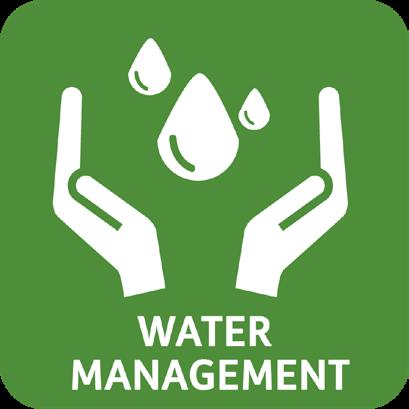
Water management: Percentage of reduction in water consumption per ton of food produced (compared to 2018).
We are aware of the importance of water in our daily life. We promote projects to minimize and reuse water, as well as implement the best industrial hygiene practices
1. Plant-specific risk and opportunities assessment
2. Short-term plan reduction for critical operations Internal benchmarking
3. Long-term plan to increase water reuse and the use of alternative sources
Investment in new technologies and processes
4. Governance and follow-up Regular Executive Committee meetings
and opportunity
As part of our water management plan and with the purpose of identifying, mitigating, and reporting water stress risks in all our production plants, we carry out a monthly and annual risk assessment at regional as well as local levels with Waterplan® and Aqueduct. These tools are designed to quantify the level of risk against our mitigation capacity in medium and long-term scenarios. This process evaluates risks in regards of reputation, regulation, flooding, water scarcity, quality, and supply infrastructure.
We conduct internal performance benchmark to share best practices from the most efficient plants and take actions to progressively replicate them in the rest of our plants. The performance comparison has the purpose of:
1. Define parameters for growth plans
2. Optimize our product washing and hygiene systems
3. Invest in and develop new technologies and processes for optimizing washing and hygiene systems in production
4. Achieve more ambitious water consumption reduction targets
In 2023, due to the intensive work on optimization plans and the use of new technologies, more than 50% of the sites were able to reduce the amount of water used.
We have water treatment and purification plants to improve efficiency in water usage. We recognize that proper operation of these plants is essential, therefore we invest in better technologies and implement programs for preventive maintenance in order to assure their optimal functioning.
In Mexico at our Xalostoc plant in the State of Mexico, we implemented a resin change in the filters of the water treatment plant. This led to a reduction of 128 tons per year of salts consumption for purification. This initiative has allowed us to improve the quality of discharged water and generate economic savings.
Moreover, we reuse more than 260,000 m 3 of treated water for different functions such as maintenance of our peripheral services, garden washing, and backwashing of machinery water filters. Likewise, we began to develop rainwater harvesting initiatives in some of our logistics centers, catching close to 300 m 3 per site.
In Europe, the Aoste plant in France achieved a 50% reduction in water consumption due to the renovation of our cooling units, reducing more than 1,500,000 m 3 in water consumption.


Rainwater harvesting in communities
Due to the droughts in Mexico in 2023, in collaboration with Isla Urbana we installed a rainwater harvesting system in an elementary school in Jalisco which benefited more than 450 students by providing 250,000 L per year. This system enhances water supply for hygiene and maintenance of school areas.


Into the future we will pursue the integration of the supply chain and communities in our efforts. Furthermore, we will continue promoting the implementation of new technologies in our own in facilities.
• Integrate intelligent in-plant systems to monitor quantity and quality parameters for water discharge
• Evaluate alternatives for water reuse in other activities
• Implement new efficient processes for hygiene and washing systems in our operations
• Continue collaborating in social projects with the purpose of providing solutions to water stress in our communities
Our packaging not only protects and preserves food, but also ensures its quality and guarantees the customer’s experience. With our Sustainable Packaging Program, we are committed to minimizing our environmental impact by incorporating circular economy principles in design, opting for recycled, biodegradable, or recoverable materials, and so progressively reducing the use of plastic. This program is the result of the work of Packaging Solutions teams, suppliers, academics, and entrepreneurs. Covering areas from research and development, to innovation, quality, technology, and marketing.

Reduce the use of plastic
Solutions for thickness reduction and/or replacements to lighter materials.

Eliminate components or layers Structures optimization and number of layers reduction through the use of monolayers or mono polyolefins.
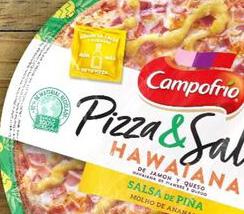
Increase the proportion of recycled plastic
Increase the percentage of recycled plastic in our packaging, avoiding the disposal of materials in landfills.

Use biodegradable material
Packaging with biodegradable components in a period of less than five years.
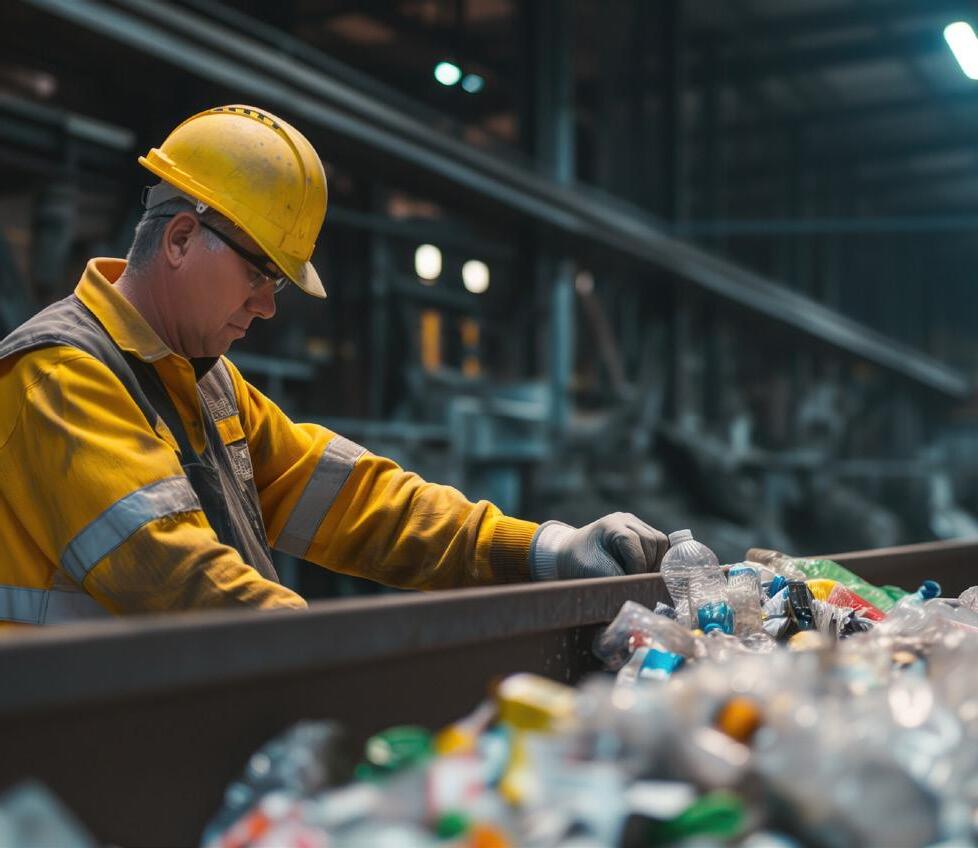
Use materials that are recoverable Less complex packaging with the right materials to make potsconsumption recycling easier.
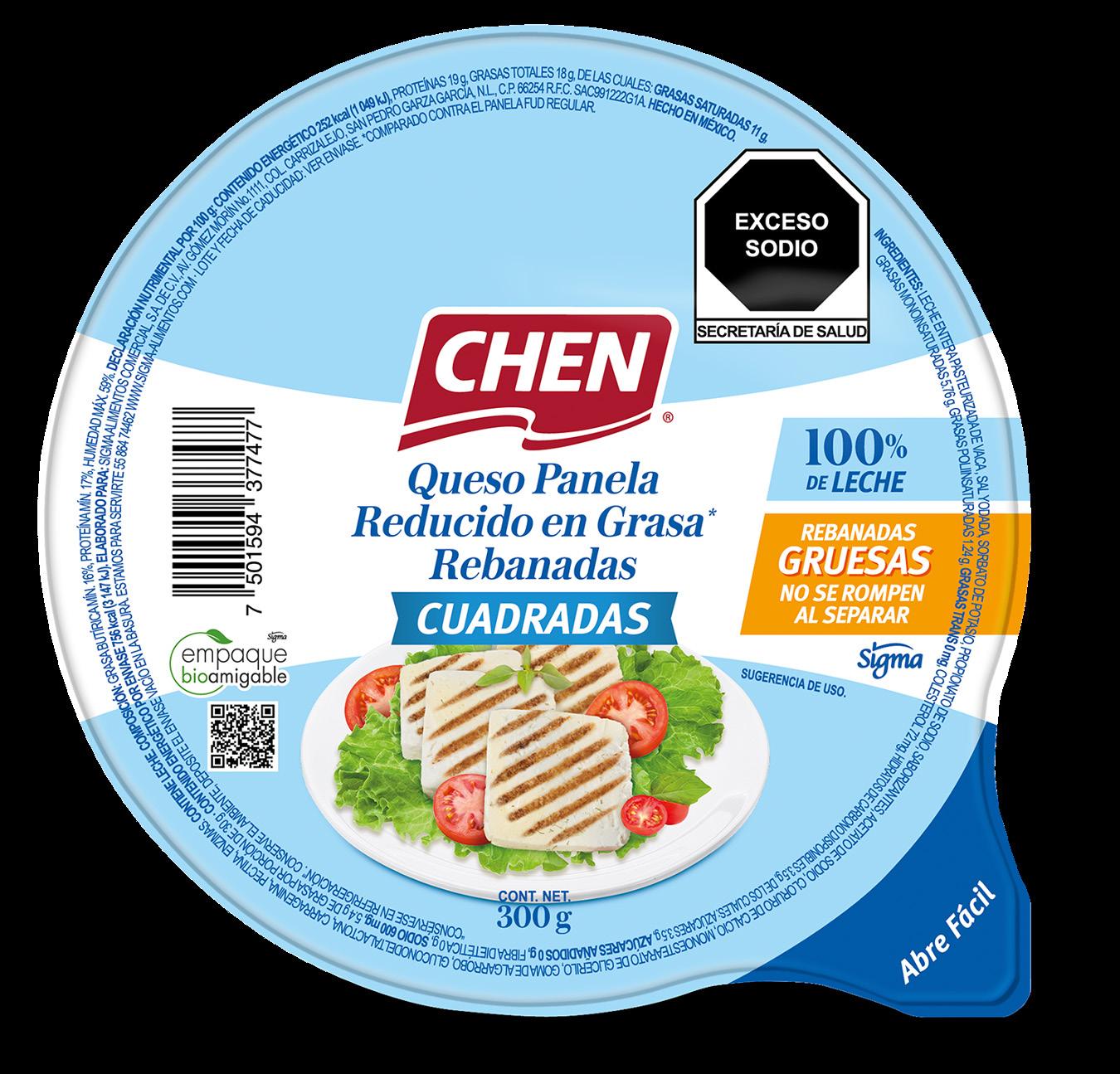
How can we design packaging minimizing the use of materials and reduce waste?
Through our strategy we aim to have more sustainable packaging that is easier to reintegrate into our value chain. Some of our initiatives include:
In Europe, through the elimination of virgin plastic in our products, we achieved our goal of reducing 459 tons of virgin plastic.
In Mexico, we work in projects on the integration of our rigid packaging residues for the production of pallets used for transportation and management of our products, achieving that 100% of their highdensity polyethylene can be recycled and reused, saving 948 tons of plastic during 2023.
We have tested materials with a base of starch, cassava, and cellulose fibers with a high barrier 6 preserving storage life.
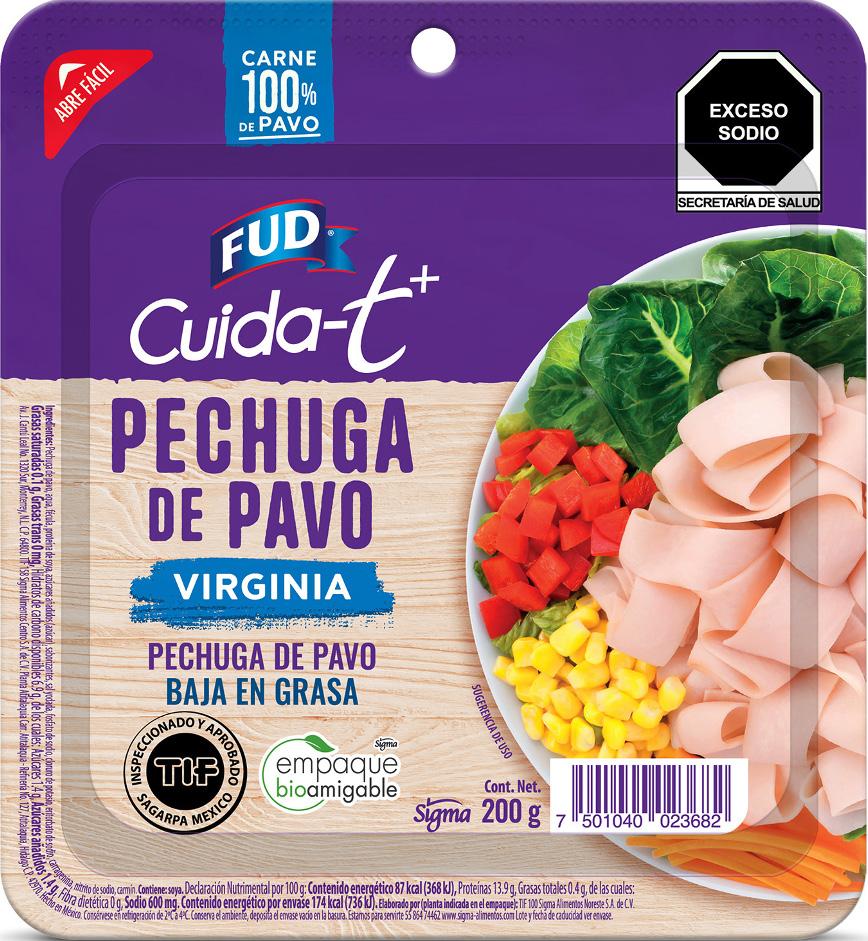
In 2023, we avoided the use of +1,638 tons of virgin plastic, reaching a cumulative of more than 10,047 tons avoided since 2019.

Introducing recycled PET material into packaging
We integrated recycled PET material into our Virginia FUD ham packaging to reduce the use of virgin plastic and maintain product quality. Thanks to this initiative, we have reduced 427 tons of virgin plastic per year.


We manage waste from our operations by implementing waste sorting at the source. We collaborate with authorized entities for its reuse, recycling, or disposal in accordance with applicable regulations and build alliances with suppliers who co-process waste. These are some of the efforts to prevent our waste from ending up in landfills.
In Portugal through a third party, we recover our organic cellulose residues produced from the sausage production by transforming it into compost. Due to this project’s success, we will look forward to replicate it in other regions where we operate.
In Mexico, we are part of the High-Density Polyethylene and Polypropylene Technical Committee at ECOCE, which has a program that promotes the collection of yogurt bottles in the country.
In Spain alongside ECOEMBES we facilitate the recycling of packaging to our customers by implementing an information system that identifies the container in which waste should be deposit.
Additionally, Campofrio Frescos established a joint venture to transform intestinal mucosa of swine to obtain heparin, an anticoagulant drug mainly used to prevent and treat venous thrombosis.

We will foster sustainability in our packaging recycling through the following actions:
• Drive open innovation through Tastetech by Sigma, seeking new circular economy initiatives.
• Develop lightweight packaging through material reduction and optimization.
• Find a balance between sustainability and costs, using environmentally friendly materials without compromising product quality and durability.
• Search for alternative chemical recycling and waste recovery technologies that meet our packaging needs, working together with our suppliers.

We establish conditions that motivate and make it easier for people to adopt habits that improve their quality of life.






• Organizational culture and work environment
• Employee health, safety, wellbeing, and work-life balance
• Employee training and development
• Diversity, equal opportunity, and inclusion
Our values, principles, and human-centered approach are key for achieving our business goals 2023 Highlights
29.5 hours of training given on average to each employee US $16.5M invested in employee wellbeing initiatives 11% of employees participating in volunteering initiatives 44% reduction in accident rate
With over 46,000 employees in 17 countries, we seek to create a space in which our employees are listened to, valued, and develop their full potential within Sigma. Over the years, we have built together a culture that values our employees, consumers, clients, community members, and all the other stakeholders with whom we interact. GRI 3-3: Organizational culture and work environment
We cultivate a growth culture by focusing on what we can control, promoting open dialogues, breaking down barriers, and uncovering the roots of problems to find effective solutions.


We promote that all actions of the organization are grounded in our principles and are consistent throughout our operations. To this end, the Global Code of Conduct provides expected behaviors that help us foster a culture of integrity and sustainability. We invite all our suppliers and business partners to understand and act based on the general principles included in our Code.

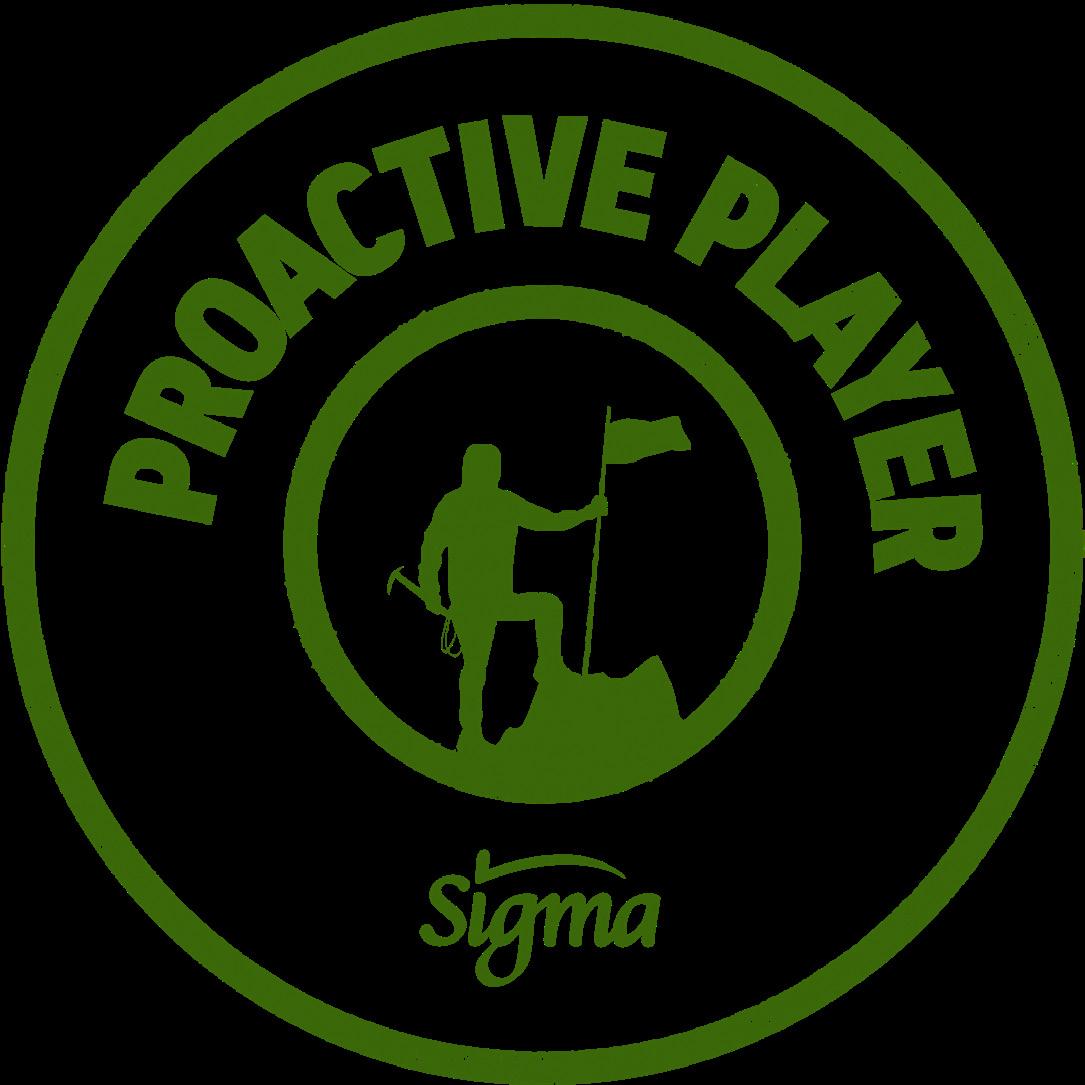
As part of our initiatives to strengthen the development of all our employees, our essential behaviors enable us to foster psychological safety within the organization and utilize our skills, perspectives, and experiences to work.

Proactive player: take responsibility and focus on what is under your control.
Collaborating effectively: provide honest and fair feedback, be open and empathic, and understand the needs of the involved parties. Global Code of Conduct: Click HERE





Learner: balance trust and humility when sharing ideas and inquire about others’ ideas.
Productive requests: make clear and realistic requests, explaining the purpose, concern, task, and expected results.
Honoring commitments: ensure fulfillment agreements or negotiate in a timely manner.

We continue to deploy Cultural Dynamics to strengthen behaviors, commitments, and challenges through creativity. These dynamics allow us to apply our knowledge in a practical way and put our principles into action in our daily tasks and decision-making. During 2023, approximately 19,000 employees in operational roles and 8,000 employees in administrative areas took part in the 4 Cultural Dynamics sessions led by their leaders.
Cultural Dynamics taught in 2023:
1. We are in the same ship
2. Ego: do you drive it, or does it drive you?
3. Ego II: look for the root cause
4. Don’t let the ego limit you

“It makes us reflect on the responsibility we have in belonging to a work team and the associated commitment to achieve the objectives.”
Mauricio Chacon Matamoros Warehouse Supervisor, Costa Rica

“The topic creates a sense of belonging in the team and, above all, encourages them to be part of the solution through individual and collective actions for the common good.”
Mauricio Ricardo Villa Serna Head of Asset Protection, Mexico

“We will continue to emphasize leadership, teamwork, and the importance of supporting each other.”
José Eladio Arreguin Martinez Logistics Manager Distribution and Transport, Foodservice
Through the We Shine Together Program, for the second year we celebrate the achievements of our employees and teams across all geographies, recognizing and rewarding those who exemplify our Essential Behaviors and Principles. This event was held virtually to reach more people and was attended by area directors.

835 employees nominated their colleagues
624 employees were recognized and nominated for fully embracing our culture
534 employees were winners in the program obtaining the highest number of nominations to date
The Cultural Pulse survey indicated a 5 point improvement in the adoption of all Essential Behaviors compared to last year

With the goal of aligning teams with business priorities, we carried out the Conscious Leaders Program for the fourth consecutive year. More than 1,160 leaders from our organization participated in the four-module training program, which seeks to empower our employees by promoting leadership and collaboration skills. For the first time, the program included both face-to-face and virtual sessions, with the participation of more than 5,000 employees. During the sessions, business leaders shared their experiences and testimonials within Sigma. We highlight the participation of our CEO, who took part in two of these sessions during 2023.

The four modules held this year:
1. Mental models
2. Effective Coordination
3. Authentic Communication part I
4. Authentic Communication part II
2023 was the first year in which we delivered the Conscious Leaders program in some of our operations outside Mexico
For the third consecutive year, we evaluated the progress of our cultural transformation. More than 5,000 employees participated in the Cultural Pulse survey, which is an annual survey that allows us to evaluate our progress in adopting Sigma’s cultural behaviors. Through this survey, our employees provide us with feedback to identify the strengths and opportunities we have in our culture. The results of this survey guide our cultural transformation plans to mitigate these barriers.
In addition, we continue to hold local Town Hall sessions in all business units to remain attentive to the opinions and needs of our employees. In these meetings, we engage in dialogues that allow us to reinforce psychological safety and normalize direct conversations between members from different areas and levels of expertise.

More than 130 global executives, including the management team and their direct reports, participated in a three-day face-to-face event where they shared opinions, listened to experts in human development, and participated in working meetings to define organizational action plans. Their objective was to strengthen cultural elements within Sigma, such as the human focus.
We are committed to ensuring the wellbeing of our employees. Therefore, in 2023 we promoted preventive medicine, implemented nutrition and physical activation programs, among other initiatives, with the aim of improving the quality of life in the organization.
At the Latacunga and Sangolquí plants in Ecuador, we have implemented two comfortable and private spaces to support breastfeeding for our employees. These spaces have been certified and endorsed by the Ecuadorian Ministry of Labor.
Nutrition and physical activation challenge in which more than 580 employees participated. 37 of them had a decrease greater than or equal to 5% of their body weight.
More than 340 employees participated in the weight and diabetes control program with the purpose of improving their quality of life, promoting healthy habits through remote personal mentoring.
In Spain, we have a plan for our employees to achieve a balance between personal life, work, and equal opportunities.
In Mexico, we welcomed new members in the wellbeing area, filling positions in psychology and nutrition, providing more than 870 and 2,100 consultations, respectively, during the year

We actively promote our team’s wellbeing by focusing on sharing practices that strengthen their health, such as balanced nutrition, effective stress management, and regular exercise. We have highly qualified medical personnel who provide primary care services at our facilities, including consulting, health promotion programs, and epidemiological monitoring strategies.
We will accelerate the cultural transformation and adoption of our Essential Behaviors. To do so, we will merge valuable lessons learned during the rollout of our initiatives in 2023. We will reinforce the importance of a healthy worklife balance for our team members. Finally, we will continue to gain deeper understanding on the barriers and challenges related to internal culture and employee engagement and effectively address them.

GRI 3-3: Health, safety, wellbeing, and work-life balance || 403-1, 403-2, 403-3, 403-5, 403-6, 403-9 SASB FB-MP-320a.1, FB-MP-320a.2
SDG 3: Goal 3.8 || 8: Goals 8.5, 8.6, 8.8

Reduction in the accident rate in our operations compared to 2018.

With the aim of maintaining a safe workplace, ensuring regulatory compliance, fostering social and environmental responsibility towards communities, and ensuring business continuity, we proactively implement our health and safety management system. This system is built upon two programs: the Global 12 Best Practices Health and Safety Program, and the Total Productive Maintenance (TPM) Program, audited and certified by the Japan Institute of Plant Maintenance.
Exceeding our goal for four consecutive years
This year, we have successfully evolved our safety culture to reduce the accident rate in our operations. As a result, we have adopted a philosophy of interdependent teams working together towards safety, where “you take care of yourself and look out for your colleagues.” This has strengthened our institutional program where we apply the 12 Best Practices, including activities such as promoting safety behaviors, reaffirming management commitment, setting ambitious goals, sharing best practices, investigating incidents at their root causes, maintaining effective communication with our employees, and evaluating results to address areas for improvement. Currently, this program is being implemented across commercial areas, regional businesses, and production lines.
We have a governance structure composed by expert collaborators from key teams for the health and safety management system, overseeing the 12 Best Practices Program. Their mission is to keep management informed about risk management, implement team training, conduct statistical monitoring and incident investigations, manage inspections, and coordinate drills, among other essential tasks. We also have supervisors who, along with their teams, implement emergency preparedness measures, including drills and training, as well as acquire, install, and maintain protective equipment. Lastly, we train our employees to have the necessary tools to respond to emergencies and prevent recurrences.
We are firmly committed to ensuring the health and safety of our employees and third parties involved in our operations. Our management system focuses on identifying, evaluating, controlling, and preventing accident risks at each stage of the value chain.

Production Manager Plant Management
1. Commitment : We are all responsible for maintaining safe operations. Through training sessions, we invite employees to commit to safe practices, as well as to care for their own physical integrity and for that of their colleagues.
2. Safety Policy : We commit to ensuring that employees know, are familiar with, and committed to complying with the principles established in the Safety Policies.
3. Training and coaching : We have a broad training program to provide employees with the tools they need to perform their jobs safely and to reinforce a culture of health and safety. In addition, we offer recommendations to promote health at home.
4. Effective communication : Through different tools that include dashboards, sessions, and workshops, we continuously recommend improvements that favor a culture of health and safety across our operations.
5. Motivation : We implemented initiatives to recognize the positive performance of employees in terms of health and safety.
Safety,
Health, and Environment Management
6. Specific roles and functions : We have a structure in place that clearly describes the various roles everyone plays in the implementation of the company’s Health and Safety System.
7. Managers’ responsibilities : We offer the necessary training and tools to supervisors and managers at our plants, as they are primarily responsible for implementing the Health and Safety System across our operations.
8. Leaders’ responsibilities : The company’s leaders are part of a chain of responsibility in the implementation and monitoring of the health and safety initiatives. At all our operations, designated supervisors ensure that all tasks are performed safely.
9. Risk assessment and performance standards : We implement robust risk assessment tools and monitor all findings and the application of recommendations closely. We adhere to laws related to the protection of employees in every location where we operate. Moreover, we have protocols in place designed to strengthen the safety culture based on best practices and our Health and Safety System.
10. Incident investigation : We employ the company’s Procedure for Managing Incidents to identify and analyze the root cause of any concerning events, as well as the way in which we can strengthen our initiatives and training to eliminate potential risks. We use an online collaboration platform to share lessons learned across our operations.
11. Program to review conditions and behaviors : We routinely make internal inspections at our operation sites. These help us validate the effectiveness of our health and safety practices and to make recommendations when opportunities for improvement are identified. Finally, we verify that these recommendations are implemented.
12. Key indicators, goals, and reporting : We establish ambitious performance goals for our plants, which we measure and communicate using standardized key performance indicators for our industry.
We have five Management Committees
Operational discipline, accident investigation, emergency response, health and safety, and occupational health. We also have three additional committees that are deployed according to each location’s needs focused on: process safety, environmental protection, and off-site safety. These committees hold monthly meetings with the teams in charge of generating and auditing safety standards.
We rely on our Health and Safety Policy and adhere to our Accident and Incident Management Procedure to maintain the highest safety standards in our operations. In addition to having protocols focused on prevention, we closely supervise the safety of our processes and emphasize the training of our employees to protect their physical integrity.

Health and Safety Management Commitees

We invested more than US $6.4 million in occupational health and safety initiatives in 2023.
Ensuring the physical and mental integrity of our employees is our priority, which is why we are constantly seeking new ways to reduce accidents by using new technologies and cutting-edge tools. Determined to strengthen our occupational safety culture and practices, this year we surpassed our 2025 commitment by achieving a 44% reduction in the global accident rate. Some of our key initiatives to achieve this result are:
In 2023, we launched the Safe Areas pilot project in all plants in Portugal, Spain, and France, involving operators and proximity managers to carry out multiple prevention activities. These included effective audits, the identification of scares 7 that could have turned into accidents and the issuance of preventive yellow cards. In addition, we conducted training and communication campaigns to raise awareness of the safety culture among the workforce.
At the Chihuahua plant, we took advantage of new technologies to reinforce our employee’s safety practices. This year, we implemented the programming of a safety check in one of our machines to be performed at the beginning of each work shift. The verification consists of a series of steps with instructions to perform a complete safety check, this is notified on the machine’s control screen, and the machine will be unlocked until the verification is correctly performed.

Thanks to the implementation of safe areas at La Bureba in Spain, the internal logistics operation ended the year with no accidents, achieving the best accident rate in the history of La Bureba with a 4.05 accident rate. This success has made the team an example to follow and ambassadors for the implementation of safe areas for other plants in Spain and Europe.
Safe Areas results:
15 plants achieved at least 1 year or more without any accidents
24% average reduction duration of accidents, indicating that they were of lesser impact or affectation
We reported no fatalities during the year related to occupational accidents
We reduced 1,546 days lost due to disability
We appreciate the commitment to the health and safety of our employees, where accident prevention efforts are part of their daily work, as in the Adobos plant in Spain, where in 2023 we achieved 4 consecutive years without accidents

This year’s performance and progress is proof that we are on the right track towards reaching a zero accidents rate, so we will challenge ourselves in 2024 to maintain a 40% reduction in the global accident rate. This will drive us to continue to expand the 12 Best Practices across all our geographies, strengthen training, raise awareness of the importance of safe practices through communication, and recognize sites that make significant safety progress, to demonstrate that the goal of zero accidents is achievable.
GRI 3-3: Employee training and development || 404-1, 404-3
SDG 4: Goals 4.3, 4.4, 4.5, 4.6, 4.7


Strengthening the full development of our teams through constant training and the implementation of growth plans is a fundamental pillar for achieving our long-term goals
Our employees benefit from continuous learning. We offer tools for specific topics and comprehensive programs, while prioritizing local needs and geographic growth. We believe that professional development is a shared responsibility between employees, leaders, and the Human Resources area.
We continuously improve our policies and initiatives to attract, retain, and develop talent, based on feedback gathered through ALFA’s Employee Engagement survey 8 . In the 20222023 cycle, 69% of our employees participated in the survey, and we achieved an engagement level of 82%.
Since 2021, we are focused on the development and implementation of our Feedback 2.0 program as a mechanism to provide effective feedback to our teams. This initiative seeks to sensitize employees to their current performance, offering them a 360-degree view. In addition, we analyze how this affects their relationships within the team, assessing how they can capitalize on their strengths and address areas for improvement. In 2023, we observed an increase in the engagement of employees who received this feedback.
US $5.6 million in training and development initiatives
We consider that this tool has awakened a greater interest in our team to pursue self-development. We are encouraged to see that the positive experiences and results of previous participants have spread by word of mouth within Sigma. More and more people are interested in joining the initiative, and in the last 3 years, we have grown from 20 members to a community of 1,000 employees. In 2024, we intend to measure the progress of the implemented methodology and extend it to all our regions.
At Sigma, we strive to offer multiple tools to our team to help them develop new skills. This allows them to diversify their knowledge and accelerate their growth within the company. Although we have more than 40 training sessions managed by the Human Resources team, in 2023 we focused on having selfdevelopment options supported by digital tools. With these, our employees are interested in and committed to managing their own learning.
We believe that knowledge is a powerful tool to drive change, so we are committed to making knowledge accessible to all. We harness the power of online courses and MOOCs (Massive Open Online Courses), equipping employees with the skills and knowledge they need to develop in their personal and professional lives.
USA, Mexico, LATAM, Central
Offers an extensive library of on-demand video courses taught by industry experts. Covers a wide range of topics including business, technology, and creative skills.
Offers an extensive library of on-demand video courses specifically to address operational issues in health and safety and quality.
Offers online courses, specializations, and degree programs. With Coursera, students can access high-quality educational content in a variety of fields, such as data science, business, computer science, and personal development.
We surpassed the 2025 Goal
We accumulated 30 hours of training per employee on average, surpassing the goal of 20 hours per year by 2025
Technology-focused training platform offering courses in software development, IT operations, data science, and cybersecurity.

Provides comprehensive education and certification in SAP software and solutions.
Internal learning platform designed to foster continuous professional development and ensure that our employees are equipped with the skills and knowledge necessary to excel in their roles.
Since the Young Talent Program began in 2004, we have enrolled 192 participants to this year
It is a dynamic and intensive development program designed to accelerate the professional growth and development of recent graduates. The program is designed for ambitious individuals who want to make a significant impact in a short period of time. For 24 months, they are immersed in different functions, projects and receive different development tools that help broaden their skills, knowledge, and will prepare them for leadership positions within Sigma. It is currently being implemented in Sigma Mexico, Foodservice, Central Areas, and LATAM.

During this period, young professionals in development interact with different areas of the company, expand their network of contacts, and experience a comprehensive development in an accelerated manner. This program has had an increasingly positive impact on the organization. In 2023, 19 people participated in the program.

The future of our training strategy
• We will work on globally aligned programs that support the development of teams and individuals at all stages of growth.
• Preparating of employees for internal leadership roles with greater efficiency. Constantly evolving to take full advantage of the talent and diversity of our workforce.



During 2023, we conducted a comprehensive strategic analysis of our personal development program , one of the most consolidated within the organization. Our objective was to evaluate its effectiveness among our self-service salespeople in Mexico and Latin America, so we involved 800 of them in the study. The results revealed that the program has significant value for them both professionally and personally. This perception reinforces their loyalty to the program, reflected in an NPS (Net Promoter Score) rating of 8.1.

We are committed to offering learning opportunities to our employees through scholarships for national and international master’s degrees that we grant together with Alfa to support our talent. We are currently proposing mechanisms and policies to open the application process to all Sigma geographies. In 2023 we provided scholarships to 16 employees in all our Organizational Units to support their professional or graduate studies.

In the USA, we initiated the Onboarding pilot project, aimed at 81 employees who were promoted to become plant supervisors. The purpose of this program is to strengthen certain fundamental skills for their performance in the position. This program was designed in collaboration with the 1 st 90 learning platform, which provides support during the first 90 days of leadership to facilitate the transition of the participants. As a result of this initiative, an 11% increase in employee retention was observed at the Darlington, Wisconsin plant.

We had 660 employees participate in the Invested program , dedicated to personal finance. This course was designed specifically for employees between the ages of 20 and 30 to teach them how to manage their financial assets and prepare them to enjoy a good quality of life in their adult years. The program has provided our employees with fundamental tools and knowledge to make responsible financial decisions and plan their future effectively.

The Retirement Program in Mexico provides preparation for employees aged 50 and over, bringing together a total of 7 participants during the year. We offered training courses aimed at having a comprehensive preparation for retirement , covering emotional, economic, and personal time management aspects. This program is designed to equip our employees with the necessary tools and knowledge to approach this stage of their lives successfully and satisfactorily.

To become an increasingly inclusive company.
45 initiatives implemented in favor of inclusion during 2023.

We believe that having a diverse workforce makes us stronger, as our team’s diverse perspectives and talents help us face the challenges of our business every day. We work to sensitize our team constantly, removing barriers and biases. During 2023, the relevance of this effort within the organization was clearly seen, reflected in the formal framework we developed for the future.
We seek to always promote equal opportunity. We make decisions based on the performance, talent, and qualities of each person. Our hiring and promotion processes do not discriminate under any circumstances. We promote an inclusive environment where differences are respected, and we can develop in the best way. We have employees of more than 60 nationalities and with diverse profiles.
The DEI strategic framework was established with three pillars:
We develop different activities to strengthen the foundations on which this framework is based. Some examples are:
We have Committees dedicated to equity and inclusion in Central Areas, Mexico, Europe, LATAM, while in the United States we have a Women’s Inclusion Network. In 2023, Foodservice joined these initiatives and created its own committee. This is implemented through communication campaigns, workshops, and training and awareness programs in each business unit on inclusive leadership, dialogues for equity and recognition of unconscious biases, among others. Each business unit has a particular approach tailored to its own needs, which vary depending on the region and its level of maturity.
Diversity, Equity, and Inclusion Policy: Click HERE
In Europe, we achieved 90% execution of the Beyond Differences strategy, which we launched in 2022. We created a diversity and inclusion manifesto, which was signed by key internal stakeholders. Over the next few years, we will be focused on raising awareness particularly among Business Unit leaders, so that they lead their teams by example in this area.

To strengthen the leadership and preparedness of female employees, during 2023 we launched a coaching and mentoring program to ensure the active and equal participation of high-potential women. We believe that having access to mentoring on how to become leaders is key to their professional development. In addition, for the fourth consecutive year, we commemorated International Women’s Day at Sigma by recognizing women from all our regions for their outstanding work within the company, and we used this time to raise awareness of existing biases and the actions we are taking to mitigate them.
Promotes the professional and personal growth of women. A forum made by women for women, which seeks to teach and strengthen the soft and technical skills of the participants, promoting growth, learning and continuous improvement. It addresses diverse topics such as empowerment, growth, resilience, creativity and innovation, financial education, emotional intelligence, conflict management, sales techniques, leadership, personal branding, adaptability to change, and among others.

Sigma’s Harassment and Discrimination Prevention Policy available HERE

During 2023, we carried out initiatives to support people belonging to minority groups. Among them:


Dialogue and external recognition of Sigma as an inclusive company


• APACE Burgos Neuro+ Project: We have started a collaboration with APACE Burgos to develop the Neuro+ Project, a neurorehabilitation program for people with cerebral palsy. Through the intensive use of new technologies, the program works on the development of skills such as concentration, attention, and memory for people with physical disabilities.
• Padel in Solidarity: The project consists of a strengthening process, both individual and collective, through which women acquire or reinforce their capacities with emphasis on the prevention of gender violence, as well as the restoration of the wellbeing of women and minors in their care who have been victims of this situation.
• Master Chef (SSRR) People with disabilities: In June 2023, we conducted a Master Chef initiative in collaboration with our friends from the APADIS Association (people with disabilities), in which more than 48 employees and 15 volunteers participated.



• Marathon du Médoc: Together with the Philippe Croizon Academy, the company’s employees ran a marathon allowing teenagers with physical disabilities to participate in the event on joëlettes or handbikes.
We formally engaged with local diversity charters in Spain, Romania, and Portugal, which have a relevant external weight. Through our participation, we demonstrated to local entities our commitment to this issue, and collaborated with them in the development of different corporate DEI initiatives. Spain joined the GT Observatory Company Network (a network of knowledge and best practices that help companies to promote the implementation of active generational diversity policies) and signed the Code of Principles on Generational Diversity.
As a reflection of our efforts, we received the EFR (familyfriendly company) certificate awarded by Fundación Másfamilia in Spain. With this certificate, the foundation recognizes that Sigma Spain has appropriate policies and initiatives to ensure work-life balance among its employees.
In Mexico, we achieved an increase of 17 points in the WEPs (Women Empowerment Principles) evaluation, and we strengthened our qualification in the Mexican Standard 025, which deals with labor equality and non-discrimination.

We will continue to strengthen our internal processes and training initiatives through awareness programs aimed at the different audiences within our Business Units. This, with the purpose of generating awareness towards the construction of inclusive and diverse environments.
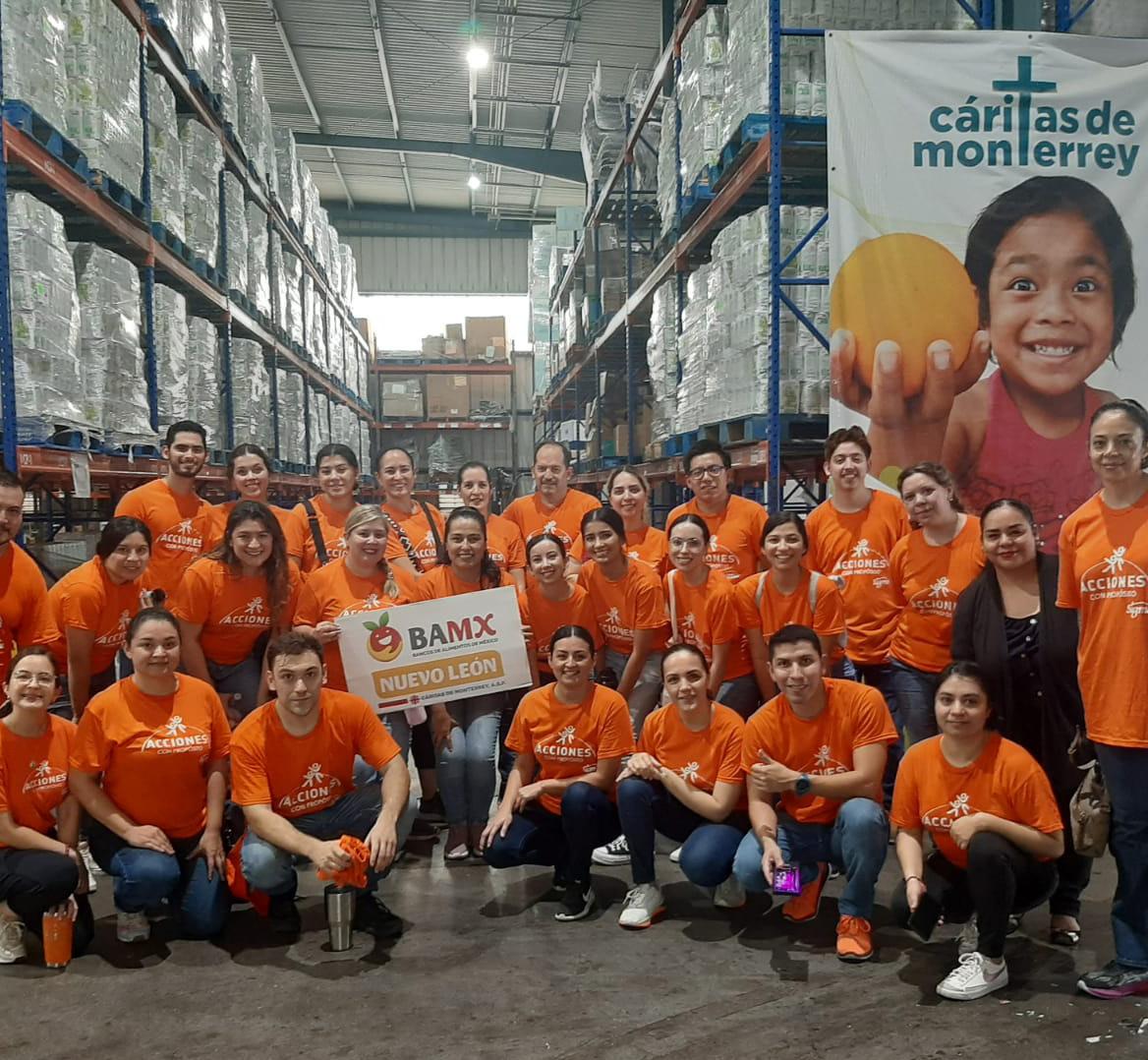
We took steps to engage our employees in volunteer initiatives that not only benefit the surrounding communities, but also enrich their personal and professional growth. After being constrained by the pandemic, we returned to conducting all volunteer activities on a face-toface basis.

Our goal for 2025 is to have at least 10% of our employees participating in our global volunteering program. This year, we surpassed our goal with 10.8% of our employees participating in volunteering activities.
Global engagement progress (% of employees participating in volunteering)
2.8% more participation vs 2022, exceeding our goal.


We continue to promote different action lines to increase the participation of our volunteers, including the incorporation of internal and external communication to the European Volunteering Committee. This team meets quarterly to follow up on the strategy and analyze progress, challenges, and barriers. We have also strengthened a collaborative culture among the different areas and regions to share resources, budgets, and time to have a greater impact on the different volunteering projects.




We celebrate International Food Day through our volunteering and donations.
In all the regions where we operate, we commemorate International Food Day globally to contribute to the fight against malnutrition and hunger and to promote better nutrition in our communities. This year, more than 1,090 employees took action and participated in volunteering initiatives focused on collecting, transporting and delivering food to people in vulnerable situations.
2,540+ volunteers
9.6% of the workforce
We work for the wellbeing of communities at Sigma Mexico
In August 2023, we supported the association Techo and for 2 days we built a wooden house for a family.
In Sigma Foodservice we collaborated with Casa Hogar Monte Halac A.C. where we supported 100 children with prepared food and donations of various personal items.

In 2023 we opened the option for corporate employees to participate as volunteers. We carried out a food donation activity in collaboration with the Mexican Food Bank Network (Red BAMX). USA

In June 2023, more than 140 employees participated in the blood donation campaign in collaboration with the Red Cross of Ecuador, with the aim of protecting and supporting patients and communities.
In April 2023, 18 volunteers and the Chaparral Park Association participated in an environmental cleanup to commemorate World Earth Day.

7,400+ volunteers
14.1% of the workforce
In June 2023, we conducted a Master Chef initiative in collaboration with the Ukrainian Association Cumbre Eslava and the APROCOR foundation (people with intellectual disabilities), in which more than 38 employees and 18 volunteers participated.

On May 19, 57 members of the Nobre team participated in a social responsibility activity to help with the control of exotic species in favor of forest conservation in the Serra de Montejunto Protected Landscape.
In September 2023, we collaborated with Hercules Day Care Center for the benefit of the 50 children from underprivileged families in Costești and the surrounding villages, who eat and learn at the Center every day. Each year, the Hercules team sources fresh produce to prepare and preserve this “fall pantry” so that the children have healthy and tasty food during the winter. The Hercules team, 19 Caroli employees and 9 volunteers worked together to make this a reality.
We promote healthy lifestyles through innovative and high-quality products.

Material topics
• Healthy and nutritious foods
• Sustainable innovation
• Food safety and quality
• Making the best out of food




2023 Highlights Health and Nutrition
The Global Nutrition and Health Unit (NHU) was created
96% of our plants are GFSI (Global Food Safety Initiative) certified
1,950+ new products launched in the last 36 months
$33 million invested in research and development 10% of revenue come from innovations
Sustainability Commitments

At Sigma we are committed to continue evolving our product portfolio by offering nutritious and delicious foods, promoting healthy lifestyles.


Formed by an internal team of experts, the Global Nutrition and Health Unit (NHU) guides the evolution of our product’s nutritional profiles, and keeps the company updated on trends and scientific advances in the nutrition field worldwide. This unit operates in collaboration with other teams such as Product Development, Innovation and Marketing, actively participating in innovation projects under Sigma’s RACU 9 process to identify and explore new opportunities.
As a center of excellence in nutrition and health, NHU strives to provide our teams with the tools and knowledge necessary to anticipate and meet our consumers, customers, and other stakeholders’ expectations in a dynamic and demanding marketplace.

9 Innovation process with the objective of transforming our way of developing products, services, processes, business models, and strategies under five steps: empathize, define, ideate, improve, and test prototypes.
2-23, 2-24
Through scientific research and education, we guide and promote the nutritional profile evolution of our products. NHU’s strategy is composed of 4 pillars:
Focused on designing and updating our internal Global Nutrition Standards (GNS) by product category and target population. These criteria are based on public health policies and dietary recommendations from national and international organizations. These standards are reflected in our internal Nutrition & Health Global Policy. Product Design, Innovation, and Marketing teams are trained on our GNS so they can be implemented in product innovations and renovations.
We partner with crossfunctional teams with the aim of accelerating growth in the health & wellness category of products. Among the priority projects for 2023, we worked hand in hand with the Growth teams on the foundation and design of new concepts (Better Balance and Snack’in for You).
In 2023, we identified priority scientific research areas in nutrition and health. Roadmaps were created for priority areas such as protein quality and personalized nutrition.


Nutrition & Health educational content and training sessions are designed and implemented across our central teams and markets to improve our knowledge. A new global learning platform, NHU Campus , will be launched to provide relevant and dynamic information.
Our Nutrition and Health Global Policy is based on public health recommendations from international institutions such as the World Health Organization (WHO), the Food and Agriculture Organization of the United Nations (FAO) and Codex Alimentarius. It also considers nutrient intake guidelines published by the U.S. Institute of Medicine (IOM), the European Food Safety Authority (EFSA) and the American Heart Association (AHA), among other recognized international bodies.

Our European brand aimed at offering specially designed food to maintain, improve and treat the nutritional status of elderly patients with chewing or swallowing difficulties. The portfolio is characterized by formulations based on the Mediterranean diet, and specific nutritional profiles.
Nutrition and Health Global Policy: Click HERE

We promote healthy diets by informing consumers in their decisionmaking process, being responsible and transparent in our marketing practices. We work to provide clear information on our products and disclose their nutritional value, in addition to complying with local regulations. All nutritional information on our products comply with international best practices, including Codex Alimentarius and the U.S. Food and Drug Administration (FDA).


Our goal for 2025 is that at least 95% of the products we market in countries without mandatory labeling regulations will communicate nutrition information in line with best practices.
We will continue to strengthen and update the Nutritional Foundations pillar to guide our products’ design in accordance with national and international dietary recommendations and public health policies.
Additionally, we will deploy an internal nutrition education and communication tool through the NHU Campus platform. This platform’s objective is to broaden our team’s knowledge and support innovations and communication plans.
3-3: Innovation, research, development, and scientific collaboration
SASB FB-PF-260a.1, FB-PF-260a.2
SDG 2: Goals 2.1, 2.2, 2.4, 2.5, 2.a, 2.c || 3: Goal 3.8 || 8: Goals 8.2, 8.3 || 9: Goals 9.2, 9.4, 9.5

Double sales of products launched through the Health and Wellness portfolio* (vs. 2019). 2x
Goal
2023 Results
We strengthen our position as market leader through innovation by offering our consumers delicious and balanced options.
Wellness

Focused on satisfying our consumers’ growing demand for innovative and sustainable solutions, we focus on innovation and new product development that will delight our consumers and customers.

Our Innovation and R&D team is made up of more than 280 specialists, 2 technology centers in Mexico and Spain, 6 pilot plants, and 12 regional research centers. At the end of 2023, we had more than 35 patents and utility models protecting intellectual property. We also collaborate with academic institutions around the world to expand our research efforts. These institutions include Tecnológico de Monterrey, Ghent University, the University of Burgos, as well as technology centers including the CARTIF Technology Center, ANIA, AZTI, FUREGA, CNTA, among others.
• The precision fermentation technique is introduced as one of the most promising avenues to produce more sustainable proteins. It harnesses microorganisms that 1.6x

function as “cell factories”, allowing us to develop ingredients with high nutritional value for the industry.
In 2023, we explored the use of advanced technologies such as precision fermentation, biomass fermentation, and cultured meat to produce proteins.
• Biomass fermentation harnesses the high-protein content and rapid growth of microorganisms to efficiently produce large quantities of protein-rich food.
• Cultured meat is the production of meat where the cells are cultivated and multiplied in a controlled environment to create meat products.
2023 Launches
United States Latin America Europe Mexico
Snack’in for You Puffs

Nutritious vegetablebased snacks.
MAXPROTEIN Yoghurt
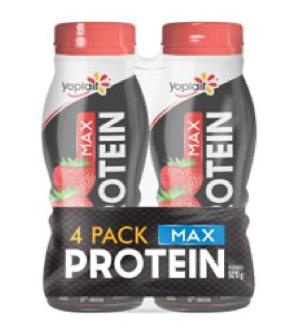
High-protein yogurt, with 25g per container.


A low fat and protein-rich snack.

In addition to innovating our product portfolio, we are working on several initiatives to develop new, cutting-edge, and sustainable packaging solutions. For more details on these initiatives, please visit the “Circular Economy” subchapter.
on health and wellness
Foods that provide nutrition and improve people’s quality of life are increasingly demanded by consumers. Sigma’s innovation model and its Health & Wellness platform foster the development and launch of new products that include improved nutritional profiles, foods with functional benefits, and products with a reduced environmental footprint, such as plant-based protein formulations.
Some of the 100% plant-based protein products launched in 2023
United States
BB Plant Based Hot Dog Europe

Sausage made from pea protein.

BB Better Bocados Mediterranean Mexico
BB Shredded Meat

Texturized soy bites with water,salt and extra virgin olive oil with natural herbs.
In Europe, all Better Balance products launches in 2023 have an A on their Nutri-score10
Our business is distinguished by offering our consumers a broad and diverse portfolio of proteinrich products that suit different lifestyles. Protein diversity allows us to provide new solutions to our product portfolio, such as designing the fat content.
Protein combinations consist of using animal proteins and vegetable ingredients to develop new products with better nutritional profiles, which are more sustainable, and guarantee to have great sensory properties (taste, texture, and smell). These combinations have the potential to offer reduced fat content products (at least a 30% reduction). This protein blending technique began in Belgium in 2021, with the launch of the Aoste Plus range of cured products, aimed at a flexitarian target audience. In 2023, it was extended to other countries.

Shredded meat made from soy protein.
Combined protein products launched during 2023

Aoste Plus Bistro Time
Pork dry sausage with legumes.
Campofrío reduced fat frankfurter sausages Portugal
Nobre omelette slices

Protein-rich, low-fat sausage with chicken meat and vegetables (cauliflower).
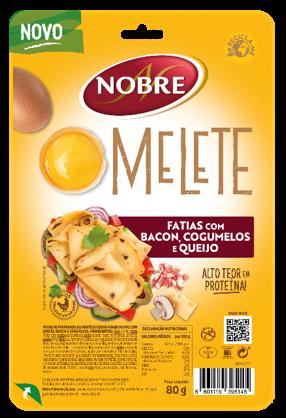
Sliced egg-based omelette with cheese, bacon, and mushrooms.
We seek to revolutionize the industry through new ideas coupled with unique and disruptive products. Therefore, we collaborate with startups and scaleups around the world, developing innovative solutions in the food industry through our open innovation program Tastech by Sigma.
For the fifth year, Tastech by Sigma, invited entrepreneurs to test their projects in four challenges to transform how the food that nourishes us is produced, distributed, and marketed:
New business models: Innovative business models that converge our capabilities and experience with emerging trends, technologies, and consumer preferences. We are looking for startups with innovative ideas and solutions in the following areas.
Future Foods: Technologies to develop innovative food products and solutions that address key nutritional challenges and align with changing consumer preferences for nutritious and sustainable food options.
Power Connections: Disruptive technologies to improve operational efficiency, optimize sales channels and leverage technology to drive innovation in various aspects of our operations.
Artificial Intelligence: Cutting-edge artificial intelligence technologies to optimize and improve critical operational processes within Sigma.
During the first four generations of Tastech by Sigma, more than 1,300 startups from 53 countries participated. We then selected 45 startups with the greatest potential to conduct pilot tests with Sigma in 8 countries: Mexico, Ecuador, Portugal, Dominican Republic, Costa Rica, Peru, Spain, and the United States.
Results from the first editions of Tastech include direct investment in food technology startups, implementation of artificial intelligence in the value chain, and active collaboration to formulate vegetarian premium cuts.

To learn more about the startups we piloted with, Click HERE

Tastech by Sigma’s 2023 progress
We explore and work together with startups to pilot and apply new proteins and packaging materials through open innovation. Test pilots for sustainable proteins, animal fat alternatives with lower cholesterol, and alternative plant proteins are among the projects we are currently developing.

We will continue to research and develop the technological and business enablers that will allow us to be preferred by our current and potential consumers. We will work on having capabilities to navigate the future food technology environment through initiatives such as Tastech by Sigma, which allow us to continue innovating in certain aspects of our product portfolio like nutrition and resource efficiency.
To become a more agile and innovative company, we will continue to operate under a consumercentered framework that allows us to experiment, learn, and adapt quickly. RACU (Rapid and Curious) represents our new way of thinking, problemsolving, and decision-making based on curiosity and experimentation.
3-3: Food safety and quality || 416-1
SASB FB-MP-250a.2, FB-MP-410a.3, FB-PF-260a.2, FB-PF-260a.2
SDG 2: Goals 2.5, 2.c ||3: Goal 3.8

Percentage of our plants with GFSI-endorsed certification (acquired by 2018).
We strengthen our practices and processes, implement controls and technologies, and transform our culture to create safe, high-quality products. This allows us to retain consumer preference and maintain our competitive advantage.

Given the need to guarantee safe products for our consumers, we have a central Quality and Safety team responsible for defining a long-term vision by identifying new technologies, processes, and policies. This Central team works together with the Quality and Safety leaders of each Business Unit who implement action plans and optimize processes with the support of each operation manager.
We are a recognized company in the food industry for its commitment to producing safe, high-quality products that meet and exceed our customers’ and consumers’ expectations based on our policy (updated in 2023). This is done by establishing a strong quality and safety culture, as well as continuously improving our value chain.

This policy is comprised of seven pillars:
Quality and Safety Culture: We promote, communicate, and live the essential behaviors of the company in relation to quality and food safety at all levels of the organization.
Quality and Safety Management System: We comply with corporate quality guidelines and food safety procedures such as the schemes recognized by GFSI (Global Food Safety Initiative), national and international food regulations and prerequisite programs.
Supplier Development Standards:
We establish the requirements for the approval, evaluation, and development of our suppliers and we analyze their performance to prevent the entry of defects into our value chain through strategic projects.
Measurement Management System: We develop and implement valid and reliable measurement methodologies to verify compliance with our standards in products, processes, and infrastructure.

We encourage the implementation of hygienic design principles in the acquisition and renovation of our equipment and facilities to prevent defects and risks of cross contamination, based on international guidelines.
Quality, Safety,
and Food
We integrate the fundamentals of quality, food safety, legality, authenticity, and food defense in the design, development, label declaration, production, warehouse, and distribution of our products.
We guarantee the accuracy, reliability, and integrity of our traceability system. Through the implementation of tools that facilitate data collection, we have increased the efficiency of our crisis response and resolution.

Quality and Safety Policy: Click HERE
To communicate and disseminate our vision of food safety and quality globally throughout the organization, we have created the Food Quality and Safety Model. This model acts as an enabler for the continuous improvement of the business, encompassing four strategic axes for our products’ manufacturing.
Constant evaluation of longterm investments for optimal performance and decision making.
Enabler for Business Improvement
Technology
Integrated global information systems, enabling quick adaptation and improvement.
*Based on Food Safety Maturity Model.
Culture based on continuous improvement of food safety on behaviors, consequences, and tools.

Horizon scanners and continuous improvements are utilized to proactively indentify and mitigate risks.
in the Sigma Food Quality and Safety Model
We made progress in digitalizing our quality and safety management systems, creating a comprehensive and detailed database. We installed new platforms and digital tools to capture and visualize data that help us make decisions. The systems we use to monitor quality and safety indicators in finished products allow us to ensure we deliver quality products to our customers.
We have environmental monitoring and inspection plans based on each operation’s risks. Our emergency response and crisis management policies and procedures integrate country-specific regulations, always prioritizing the consumer.
We work with organizations specialized in the development of food safety processes, criteria and technologies. We seek to generate a competitive environment in the industry to benefit consumers. Globally, we participate in the International Association for Food Protection (IAFP) to share best practices in the protection of the food supply.
In Mexico, we are part of the local working group of the Global Food Safety Initiative (GFSI), focused on food safety actions in conjunction with the National Service for Agri-Food Health, Safety and Quality (SENASICA). In addition, we have contributed to integrating GFSI criteria into Mexican regulations under a collaboration model that has been taken to other countries.
In Europe, we collaborated with the European Hygienic Engineering Design Group (EHEDG) in the development of a new global reference standard focused on strengthening safety practices during meat processing. We also participate in training, conferences, and forums designed to strengthen food technologies.
World Food Safety Day: At this event, we reinforced Sigma’s commitment with food safety. Our Chief Executive Officer (CEO) and our Director of R&D, Innovation, and Sustainability (CRISO) reinforced our commitment to food safety. In our 2023 event, a recognized expert in food policies and our Food Safety Community shared on the importance of food safety and our responsibility in the food industry.
For the first time a voluntary survey was applied to all collaborators to evaluate Sigma’s safety culture and establish action plans for its reinforcement. As a result, operations in LATAM (especially Peru) undertook improvement plans involving the Quality, Sales, Operations, and Human Resources areas.
the Quality and Safety Policy and understand its purpose.
how the food we produce can become contaminated and cause illness to our consumers.
Take pride in the products we elaborate because they are safe and of the highest quality.
Leadership teams always put quality and safety before production and/or delivery.
Food quality and safety procedures must be followed to avoid putting the company and/or our consumers at risk.




Best quality and food safety practices starting with procurement
• We leverage our global supply chain to mitigate risks related to raw material procurement. Our goal is to maintain operational continuity. We actively identify alternative materials and manage inventories to mitigate variations in logistics lead times. We also work to diversify our suppliers by origin, type of raw material, distributor, among others.
• We implement traceability system enhancements worldwide to ensure that finished products meet the highest standards of food quality and safety. Systems are designed to retain any product within our distribution network if necessary, avoiding any impact on consumer safety or brand and company reputation.
• We inspect all incoming materials, reviewing the main aspects for a statistical sample based on the pass/fail criteria for each product category. This inspection includes physicochemical analysis, microbiological analysis, and compliance with specifications, among others.
• We evaluate our suppliers’ performance through scorecards that consider any rejections or near misses and evaluate trends to establish development or replacement projects.

Our commitment to quality and food safety begins with our supply chain. We work with all of them to deliver reliable products. Through the Responsible Sourcing Code, launched in 2021, we establish the practices we expect from them, including:
• Compliance with all applicable regulations
• Delivery of products within the quality and safety standards defined by Sigma and GFSI
• Implementation of controls to prevent defects in production
• Aplication of risk assessment methodologies
• To have a safety plan that includes a Hazard Analysis and Critical Control Point (HACCP) system, following international guidelines
• Validation of quality and safety management systems through audits aligned with international criteria established by GFSI and Sigma’s policies

• We will continue strengthening the quality and safety of our products with new technologies and efficient processes. Becoming an enabler for the continuous improvement of our business and, at the same time, a competitive advantage for Sigma over its peers.
• We will continue to promote the adoption of a culture of quality and safety at all levels of our operation through education, training, and awareness campaigns, linking our commitment to the protection of our brands and products.
Responsible Sourcing Code: Click HERE
Aware of the importance of optimizing the use of resources and making the most of the food we produce, we reduce food waste on three fronts:

By operating our production lines under the highest quality standards, we can increase efficiency and minimize waste. We constantly implement new processes and projects based on evaluations and historical data.

We make the most of our production processes
We develop robust operating plans and rely on information technologies to adjust production levels to demand projections. We work on new packaging technologies that stand out for their essential properties, which protect the optimum conditions and quality of food, while being environmentally friendly.
We have extensive control processes that allow us to contribute to Sustainable Development Goal 12: Responsible production and consumption in conjunction with different associations and food banks.
In Mexico, our point-of-sale order optimization tool, SmartPack, has a specialized algorithm to identify successful products, with high turnover, vs. those with low turnover. We focus on making this tool adaptable to the way our customers operate, as each one has its own operating and technological systems. Through SmartPack’s platform, we seek to improve our sales processes. Thanks to this initiative, we are improving product rotation to keep products in stock for the shortest possible time, reducing operational shrinkage. Additionally, we are making customers aware of the relevance of their co-responsibility in the process.

The use and adaptation of new technologies, such as optical recognition where, through an image, we can be more precise and ensure the availability of our products on the shelf with the purpose of finetuning existing systems. We will ensure our digital tools have the scalability and flexibility to reach a greater number of our operations and customers.


We create economic and social value through our strategic practices and share them to stimulate development and stregthen our value chain.

Material topics
• Responsible sourcing
• Relationships with stakeholders
• Food donations



2023 Highlights
31 products obtained animal welfare certifications in Mexico and Costa Rica
38 farms that supply dairy products to Sigma in Mexico and Costa Rica obtained the Welfair® Certification, making us pioneers at obtaining this animal welfare certification in these countries
2 plants in LATAM obtained the Welfair® certification
21% of purchases from suppliers with responsible practices
23,712 tons of food donated by 2023

We collaborate with our suppliers and have a dedicated team to implement best practices across our value chain.




As part of our strategy to monitor responsible sourcing within the company, the global supply, local purchasing, quality, and central sustainability teams continue to work with our value chain to promote best responsible practices and reinforce our shared sustainability vision. Therefore, we have identified and work with strategic suppliers covering 80% of the purchase volume of meat, dairy, ingredients, and packaging raw materials to mitigate potential risks and opportunities related to the value chain.
We evaluate our strategic suppliers through two questionnaires. A responsible supplier is defined as those who approve both of these assessments:
• Carbon Disclosure Project (CDP) to assess the environmental pillar
• Sigma’s Supplier Assessment (internally developed assessment) covering the social and governance pillars

Assessments submission Data gathering and analysis
Supplier feedback
Follow - up with suppliers to define the action plans in order to address the identified opportunities.

In 2024, we will merge both suppliers’ evaluations to improve the quality, comparability, and traceability of their responses and processes. Through this initiative we will facilitate the assessment and identify opportunities and risks. We will continue working on reaching sustainability commitments with our suppliers.

Our Responsible Sourcing Code aims to reinforce our sustainability positioning for business relationships with suppliers and align efforts by developing a shared sustainability vision. It describes the requirements, expected practices, and regulatory and industry standards that apply to Sigma’s supply chain.
As part of our value chain, suppliers are expected to be aligned with the provisions of this Code through tangible efforts.
Health & Nutrition
• Provide safe and reliable products with high quality standards
• Audit and risk assessment
Shared Value
• Adhere to applicable laws
• Avoid fraud
• Prevent money laundering
• Foster anti-corruption activities
• Maintain confidentiality
• Protect intellectual property
At the annual event held by the US procurement team, Sigma’s Nutrition and Sustainability Director spoke to over 200 suppliers about the company’s actions to strengthen its value chain and how to match our sustainability strategy with their goals.
Wellbeing
Environment
Responsible Sourcing Code: Available HERE
• Human rights
• Safe environment
• Healthy environment
• Environmental protection
• Waste management and disposal
• Water management
Sigma Europe is certified under the ISO 20400 standard for Sustainable Procurement for its non-meat raw materials.

• Promote the implementation of international standards
• Value chain traceability
• Promote animal welfare
• Avoid conflicts of interests
• Compete with integrity
• Guidelines for gifts and business hospitality
• Prioritize transparency
• Contribute to the communities
• Protect personal data
• Diversity and inclusion
• Harassment prevention
• Environmental impact mitigation
• Resource conservation and forest management
FB-PF-260a.2
Through our actions we want to contribute to animal welfare and health, the sustainability of our value chain and the protection of our environment.
Animal Welfare
FB-MP-410a.3
As a leader in the food industry seeking to guarantee a responsible production, and ensure the highest standards of food safety, we have identified practices in the value chain, such as procedures and actions designed to ensure animal welfare. We have developed the Animal Welfare Protocol that has been implemented in Europe where we establish the commitment to respect animals’ 5 freedoms:
• Freedom from hunger and thirst
• Freedom from discomfort
• Freedom from pain, Injury, or disease
• Freedom to express natural behavior
• Freedom from fear and distress
Based on our progress in animal welfare in Europe, we will seek to define a work plan to extend this Protocol in other geographies where we operate.
We continue to make progress in animal welfare by obtaining the following certifications:

11
Certified plants
• Spain: Campofrio Frescos and La Bureba in Burgos.
• Portugal: Rio Maior
• Belgium: Champlon, Cornby, Dacor, and Imperial
• Netherlands: Whije
• France: Saint-Symphorien
• Mexico: Sabinas
• Costa Rica: Cartago
Certified products 11
• We obtained for the third consecutive year the Welfair® seal of animal welfare for all Campofrío sliced cooked ham products in Spain.
• We obtained Welfair® for 21 SKUs of the Lekkerland brand in Costa Rica.
• We obtained Welfair® for 10 SKUs of the Chen, Fud, Noche Buena, Norteño, La Villita, and Sigma Foodservice brands in Mexico.

Each week, Fomento Lechero’s producers provides us with 8.3 million liters of milk in México, 500,000 in Costa Rica and 138,800 liters in the Dominican Republic.
With the intention of strengthening and developing our suppliers, we have the Fomento Lechero Program in Mexico, Dominican Republic, and Costa Rica. It provides technical advice and specialized technification support to dairy producers. Through this program, we have impacted more than 765 families in Mexico, Costa Rica, and the Dominican Republic with whom we have commercial agreements where we eliminate intermediaries and seek the total purchase of their production. It is worth mentioning that the farms that have been selected by the program have high quality standards, such as best quality practices.

During 2023, the Welfair® certification process began for 23 farms in Costa Rica and 15 farms in Mexico. This certification ensures that these dairy farms treat their animals correctly, taking care of their wellbeing. It also verifies traceability from the input to the products produced at our plants in Sabinas in Mexico and Lekkerland in Costa Rica. This project was implemented within the framework of the Sigma Dairy Development Program in both countries. In 2024 we obtained both certifications, being pioneers in Mexico and Costa Rica for the Welfair® seal.

We will continue strengthening a sustainable supply chain through the evaluation and collaboration mechanisms established with our suppliers. We are committed to continue training them in sustainability practices and will work to extend the implementation of the Animal Welfare Protocol which endorse the 5 freedoms of animal welfare.
We support the UN Global Compact
In 2021, Sigma joined the United Nations Global Compact, and during 2023, we reaffirmed our support for its 10 Principles. This report serves as our disclosure on the achievements regarding the UN Compact Principles’ implementation in our operations.
Associations and partnerships
We actively participate in 70+ local, national, and international associations and alliances.
We build long-term relationships with our clients
We are committed to offering our clients the best service and personalized support. We maintain open communication channels with them to understand their needs and concerns. We position our products in more than 680,000 points of sale worldwide through our long-term relationships.
Who are our clients?
Modern Channel Supermarkets, hypermarkets, and convenience stores
Traditional Channel Mom-and-pop stores and specialized markets
Foodservice Channel Hotels, restaurants, movie theaters, industrial cafeterias, hospitals, among others
E-commerce Channel Grillhouse by Sigma, Foodservice Go and Convy


Our Client Excellency Program in Mexico has boosted the development of our clients in the Traditional Channel through consulting and providing support to equip points of sale. This Program has an app of the same name created for Sigma’s customers, where they can find available promotions and contests.
We have a Service Center in all our regions that closely monitors the needs and concerns of our customers and consumers through an omni-channel platform. This year’s progress and results were:
2023 Figures
326,095 contacts made with customers, shoppers, consumers, and internal personnel
The service levels measured through our SIGMA Contact Center are as follows:
+3,700 satisfaction evaluations conducted
93% of our customers consider the speed with which their telephone interaction is handled to be ideal (source: Satisfaction surveys)
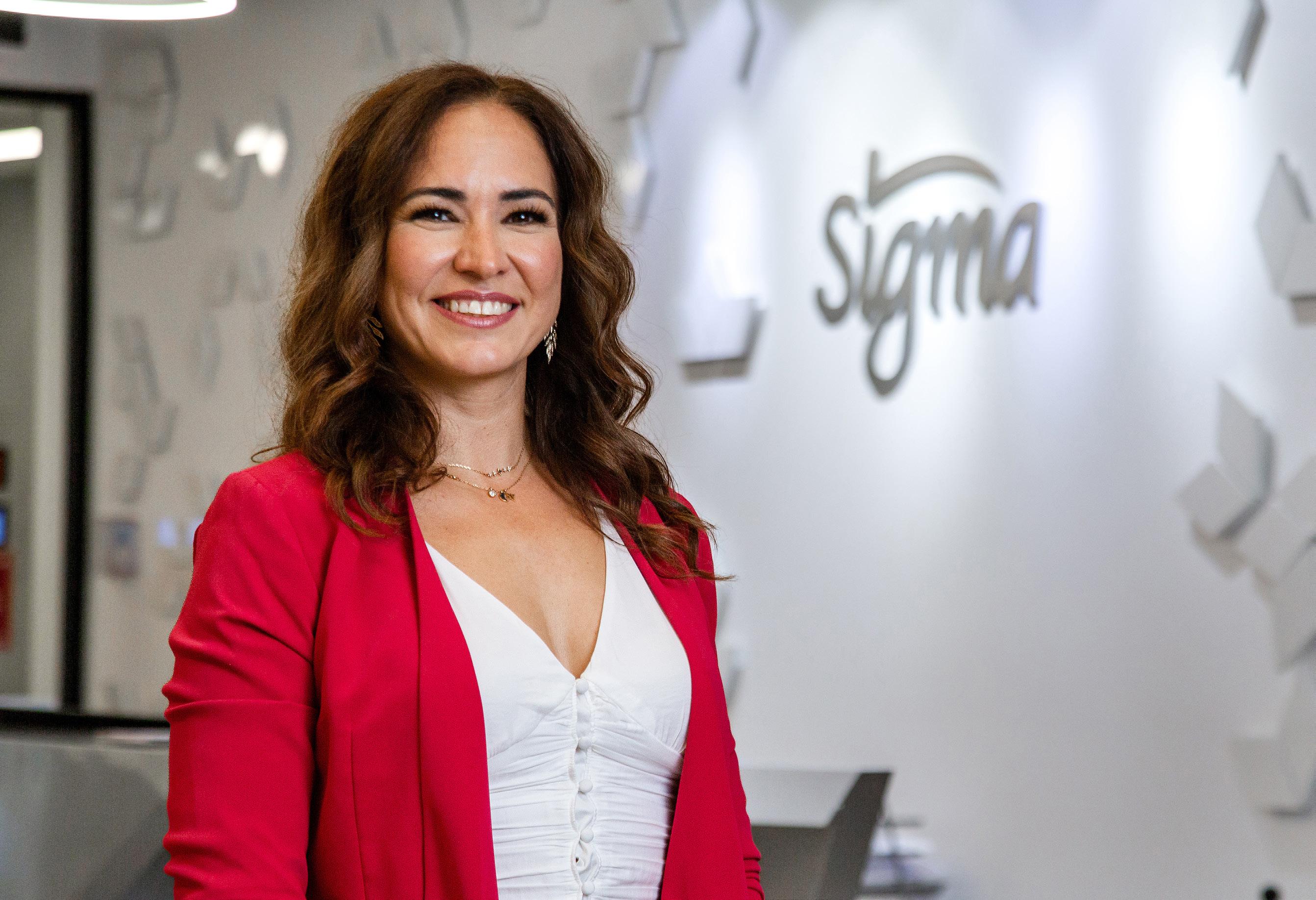
76 cases
customer and consumer service schemes are established, as well as the disclosure of the contact channels in each country for customer service
3,792 Interactions through the real-time messaging service form: https://www.sigma-alimentos.com/

Tons of food donated (since 2015)
We build alliances with food banks and associations with whom we join forces to increase the impact and efficiency of the product donations we make in vulnerable communities.
As a result of all our efforts, we increased the food donation vs 2022 by 2,584 tons obtaining a cumulative result from 2015 to 2023 of more than 24,266 tons of food donated, which is equivalent to a 95% progress of our 2025 commitment, equivalent to more than 175 million food portions.
In 2023 El Salvador, Honduras, and Ecuador joined our donation programs for the first time.
Our actions contribute to the fight against hunger
• In Mexico: we conducted a food donation activity in collaboration with Banco de Alimentos de México (Red BAMX). In 2023, we opened the option for corporate employees to participate as volunteers.
• In Europe: we continued to donate products to various food banks. We donate products in excellent condition with minimal superficial defects in the packaging.



Material topics
• Ethics and integrity
• Governance

Our purpose and ethical principles guide the continuous strengthening of the standards, policies, and procedures that regulate us, to establish a structure that promotes sustainable value creation in the long term.


2023 Highlights
Corporate Governance
2-9 to 2-24, 3-3
Verification of emissions calculation by Carbon Trust in compliance with ISO-14064-3 standard for the 2019 base year.

42 points in 2023, compared to 35 in 2022.
Maintained CDP Climate Change and Water “B” score above the sector average score of “C”.

Rating to 24.6 points in 2023, from 29.7 in the previous year keeping our Medium Risk classification.

Sigma’s Advisory Board support on our strategy and verification of the 2025 Sustainability Commitments progress.

On April 2022, Sigma incorporated its Advisory Board. This corporate governance body is currently composed by 12 individuals with extensive experience and outstanding track records. Their areas of expertise include strategic planning, sustainability, finance, operations, consulting, entrepreneurship, private equity, health & nutrition, and retail.
In 2023, the Advisory Board met on 4 occasions (February, May, September, and December).
As part of ALFA, we follow the corporate governance guidelines established by its Board of Directors, whose goal is to ensure that decisions regarding the company’s strategy are consistent with the highest integrity, transparency, and value creation standards. ALFA adheres to the Code of Principles and Best Corporate Governance Practices (CMPC), which has been in force in Mexico since 2000.
This Code was developed at the initiative of the Mexican securities market authorities, and its purpose is to establish corporate governance principles to enhance investor confidence in Mexican companies.
Companies whose stocks trade on the Mexican Stock Exchange must disclose the extent to which they adhere to the Code of Principles and Best Corporate Governance Practices. This is done annually by responding to a questionnaire, which is available to the public through the Mexican Stock Exchange’s web site.
A. The ALFA Board of Directors comprises 12 regular members who have no alternates. Of this number, seven are Independent, three are Related Patrimonial Board Members, one is an Independent Patrimonial Board Member and, lastly, one lacks a specific classification for being the CEO of a public limited company in whose board of directors our President participates. ALFA’s annual report provides information on all the Board’s members, identifying those who are independent and the Committees in which they participate.
B. Three Committees assist the Board of Directors in carrying out its duties: Audit Committee, Corporate Practices Committee, and the Planning and Finance Committee. All three committees are headed by an independent board member. The Audit Committee and the Corporate Practices Committee are formed exclusively by independent directors.
C. The Board of Directors meets six times a year. Board meetings may be called by the Chairman of the Board, the President of the Audit Committee, the President of the Corporate Practices Committee, the Secretary of the Board, or by a group of at least 25% of its members. At least one of these meetings is dedicated to defining the Company’s medium and long-term strategy.
D. Members must inform the Chairman of any conflicts of interest that may arise and must abstain from participating in the corresponding deliberations. Average attendance at Board meetings in 2023 was 97.6%, and Committee attendance was 100%.
E. The Audit Committee studies and issues recommendations to the Board on matters such as the selection and determination of fees to the independent auditor, coordinating with the internal audit area of the company, and studying accounting policies, as well as the review of environmental, social, and governance matters, among other functions.
F. The Company has internal control systems, whose general guidelines are submitted to the opinion of the Audit Committee. In addition, the independent auditor validates the effectiveness of the internal control system and issues the corresponding reports.
G. The Planning and Finance Committee evaluates all matters relating to its particular area and issues recommendations to the Board on matters such as feasibility of investments, strategic positioning of the company, alignment of investment and financing policies, and review of investment projects.
H. The Corporate Practices Committee is responsible for issuing recommendations to the Board on such matters as employment conditions and severance payments for senior executives, compensation policy, succession plans, and substitution letters, among others.
I. ALFA has a specific department for maintaining an open line of communication between the company and its shareholders and investors. Its purpose is to ensure that they have the financial information, or any other information they need to assess the development of the company’s activities.
The ALFA Audit Committee is in charge of reviewing the company’s environmental, social, and governance matters, as well as those of its subsidiaries.
*Corporate
2-11, 2-17
M 2 Global Director of Employee Experience and Engagement of Sigma Sustainability, Social Responsibility
Enrique Castillo Sánchez Mejorada* M 13 Managing Partner of Ventura Capital Privado Finance
Francisco Javier Fernández Carbaja* M 13 CEO of Servicios Administrativos Contry
Finance, Commercial and Investment Banking, Insurance, and Bonding
Álvaro Fernández Garza M 18 Chairman of the Board and President of ALFA Industrial, Food and Beverage, Petrochemicals, and Telecommunications Sector
Armando Garza Sada M 23 Chairman of the Board of Nemak, S.A.B de C.V. Industrial, Food and Beverages, Petrochemicals, Telecommunications, and Strategic Planning Sector
Claudio X. González Laporte* M 36 Chairman of the Board of Kimberly-Clark de México, S.A.de C.V. Finance and Consumer Products Sector
David Martínez Guzmán* M 13 Founder and Managing Director of Fintech Advisory Inc. Finance, Investments, and Telecommunications
José Antonio Meade Kuribreña* M 5 Independent Advisor

Finance, Treasury, Foreign Affairs, Social Development, Energy, and Strategic Planning
Alejandra Palacios Prieto14 FIndependent advisor of topics such as business strategy, M&A and regulatory compliance Finance, M&A, Corporate Gobernance, Sustainable Capitalism y Diversity, Equity and Inclusion
Alejandro Ramírez Magaña* M 4 CEO of Cinépolis

Strategic Planning, Operations, Audiovisual Content Production and Distribution, Economic Analysis, Public Policy Evaluation
Adrián G. Sada Cueva M 3 CEO of Vitro Administration, Finance, Strategic Planning, and Mergers & Acquisitions
Federico Toussaint Elosúa* M 15 Chairman of the Board and CEO of Grupo Lamosa Industrial Sector
Guillermo F. Vogel Hinojosa* M 15
* Independent Member
14 Joined on May 15 th , 2024
Carlos Jiménez Barrera holds the position of Secretary of the Advisory Board.
Chairman of the Board of Grupo Collado and Exportaciones IM Promoción, Vice-Chairman of the Tenaris World Counsil Administration, Finance, Strategic Planning, and Mergers & Acquisitions
Sigma’s management team is composed of highly qualified people with enriching experiences whose knowledge contributes to the company’s growth.
Rodrigo Fernández
Sigma CEO 16
MBA Wharton
Eugenio Caballero
CEO Mexico
MBA Harvard
Juan Ignacio Amat17
CEO Europe
MBA INSEAD
Jesús Lobo
CEO USA
MBA Cornell University
Sergio Ramos
CEO Latin America
MBA University of Texas at Austin
Gerardo Carcoba
CEO Foodservice
MBA DUXX
Roberto Olivares
CFO 16 - Finance
MBA Duke
Gregorio de Haene
CRISO 16 - Innovation, Sustainability, and R&D
MBA ITESM
Beatriz Patrón
CTCO- Talent & Culture
MBA IPADE
Alejandro Suárez
CIO – Information Technology
Master in Operations
Research George
Washington University
Daniel Alanis
CGO – Growth
MBA & Msc. Mechanical
Engineering
University of Michigan
15 Management team as of July 12th 2023.
16 CEO, CFO and CRISO have variable compensation linked to sustainability performance.
17 Juan Ignacio Amat assumes the role of CEO Europe, previously held by Ricardo Doehner. The changes were effective as of June 1 st , 2024.


Sigma’s Sustainability Community has more than 290 employees specialized in ESG topics who lead the implementation of our strategy on a daily basis. These efforts are led by the Chief Research, Innovation, and Sustainability Officer, who regularly reports on progress and challenges to the Company’s Management Team and Advisory Board.
The Central Sustainability Team, along with the Sustainability Community, define, coordinates and monitors the strategy’s implementation. At the forefront of each of the 2025 Sustainability Commitments there is also a leader in charge of monitoring and executing the projects.
CRISO - Innovation, Sustainability, and R&D Director
• Leads and authorizes ESG strategic directions
• Reviews ESG progress on a quarterly basis
• Presents ESG initiatives and shares processes of existing projects with the Management Team and Advisory Board
• Channels feedback to and from the various corporate governance groups

Sustainability Central Team
• Develops the sustainability strategy
• Establishes priorities, commitments, and targets
• Implements intelligent monitoring systems
• Elaborates ESG reporting
• Develops plans for decarbonization, water management, circular economy, and responsible sourcing
• Leads the Green CAPEX process
• Evaluates new technologies and provides support to Business Units
• Trains ESG change management efforts
• Responds to stakeholder requests
• Follow up on governance issues

ESG Champions
• Experts in sustainability commitments
• Aligns local efforts with organizational objectives
• Consolidates data and information used in decision making processes
• Gathers information on the processes carried out
• Supports local teams with the implementation of initiatives
• Sharing of best practices Business Units
• Develops and proposes sustainable efficiency projects
• Execute ESG plans at the local level
• Deploy investments
• Complies with and improves sustainability governance
• Reports on progress and achievements

• Implementation of a global ESG data system for traceability, reporting, and decision making.
• Update our materiality analysis with a double materiality perspective.
• Establishment of a Central ESG Committee for oversight and approval of ESG strategy.
• Preparation for reporting under International Financial Reporting Standards (IFRS) and Corporate Sustainability Reporting Directive (CSRD).


R Responsible Directly in charge of the work
A Approver Responsible for the performance of the task and accountable for its execution
C Consultant Possesses the necessary information or capacity to perform the task in an optimal way
I Informant Must be informed about the progress and results of the execution of tasks
S Support Shares information to the different governance bodies
V Verifier Ensures that established processes are carried out in accordance with company policies and guidelines
To ensure compliance with the Global Code of Conduct, at Sigma we train our employees on topics such as the prohibition of unfair competition, legal compliance, prevention, and management of conflicts of interest, anti-corruption practices, protection of data privacy and intellectual property, diversity, equity and inclusion, among others. We also have internal communication programs and campaigns through e-mail, intranet, and posters to improve knowledge of and adherence to the Code of Conduct’s principles.
Topics included in the Code of Conduct
We live a culture of integrity
We foster a safe and dignified environment
We commit to our partners
We manage information with responsibility
• Adhere to applicable regulations
• Abide by honest business practices
• Value and respect each other
• Prevent harassment
• Promote quality and food safety
• Collaborate with our partners ethically and legally
• Follow safety procedures
• Ensure data confidentiality
• Respect intellectual property rights
• Avoid conflicts of interest
• Safeguard company resources
• Promote a safe workplace
• Guarantee human rights
• Compete with integrity
• Ensure transparency in communication
• Avoid insider trading
• Report clear and objective information
Additionally, the company adheres to the guidelines of the International Labour Organization (ILO) concerning Human Rights and the 10 principles of the United Nations Global Compact, thereby rejecting any form of discrimination, child labor and exploitation, forced labor, abuse or coercion, as well as threats and obstruction of the right to collective bargaining. We emphasize that Sigma does not allow facilitation payments or commercial bribes.


Expected acts and behaviors for our employees, suppliers, and business partners in line with the general principles expressed on our Global Code of Conduct and Responsible Sourcing Code:
We honor the moral value of honesty, and respect anticorruption laws and regulations. We do not accept, carry out, order, authorize, promise, conspire, or induce acts of corruption, either directly or through third parties. The sole fact of offering or promising any type of improper compensation, even if the event does not materialize, constitutes an act of corruption in itself.
We do not commit and condemn unethical or unlawful acts in connection with our work, nor do we encourage others to do so. We avoid situations that could be perceived as illegal.
We do not commit and condemn any type of fraud (false, erroneous, incomplete or untimely information or reports, as well as financial fraud).
To prevent money laundering we comply with restrictive measures adopted by local governments and international organizations against certain countries, persons, assets, or services.
We respect and support Human Rights as defined by the International Human Rights Law proposed by the United Nations, and as a Company:
- We provide fair wages and working conditions in accordance with international and local laws.
- We respect the right of free association.
- We ensure a safe and humane work environment.
- We prohibit forced or child labor.
- We promote respect and compliance with human rights and fundamental freedoms.
In line with international commitments and in compliance with international and local laws, we prohibit the hiring of children and will not condone the use of forced labor in our value chain. Therefore, our suppliers’ practices must be aligned with our Principles and Responsible Sourcing Code.
As part of strengthening our value chain, we require our suppliers and business partners to act and behave within the framework established by the general principles included in the Code of Conduct and the Code of Responsible Sourcing.

2-16, 2-25, 2-26
We have a Transparency Helpline, through which cases of non-compliance with Sigma and ALFA policies, as well as the Code of Conduct, are reported, detected, investigated, and resolved. The operation and methods of contacting the Helpline are continuously disseminated through the websites of ALFA and Sigma, the company’s intranet, internal e-mails, and posters. Mention of the helpline is also made in orders, quotation requests, and invoices.
The helpline operates 24 hours a day, 365 days a year, through the website, e-mail, SMS, and 1-800 toll-free phone numbers.
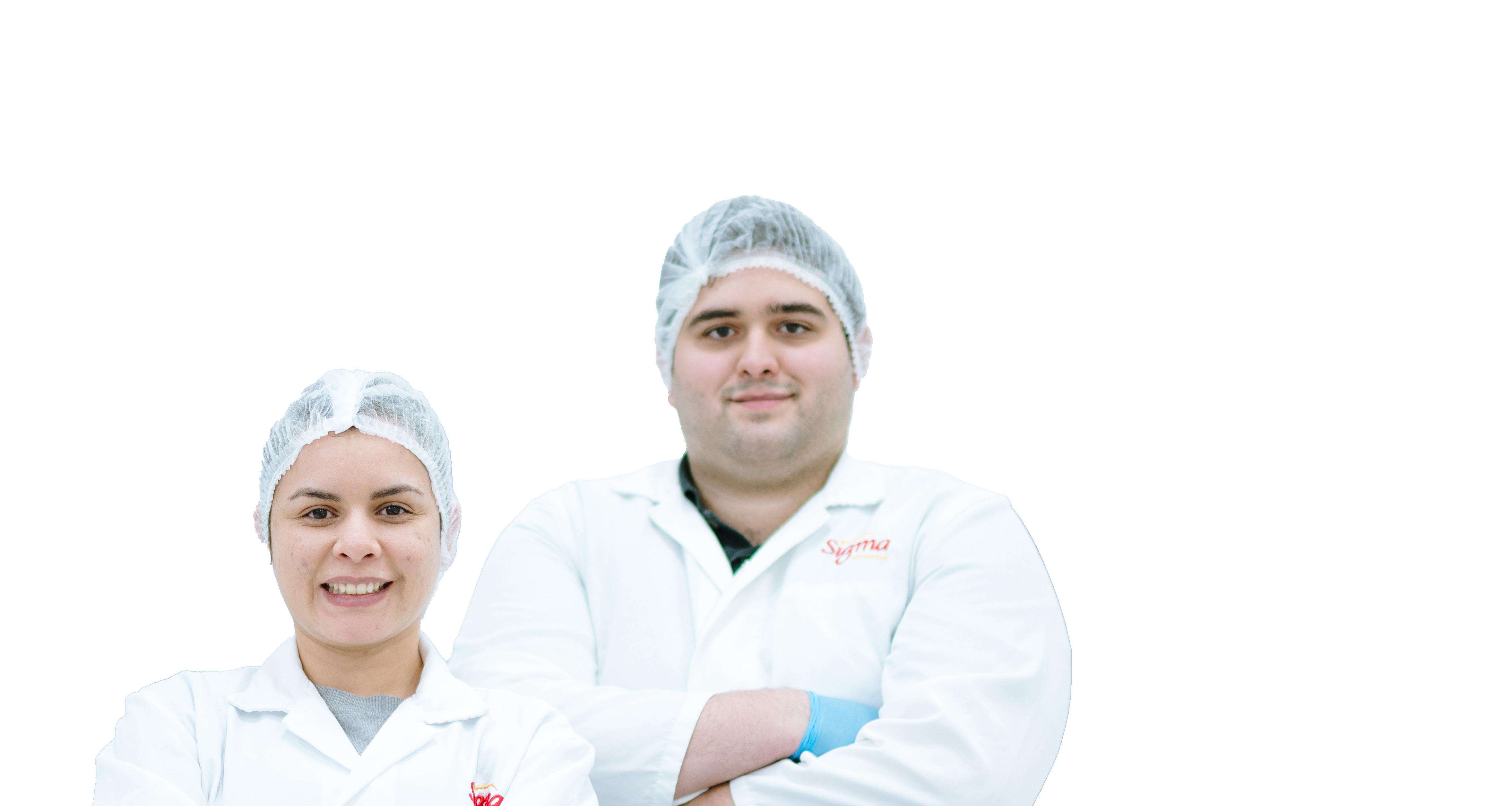
During 2023,
896 complaints related to Sigma were made through the Transparency Helpline.
For more information, review the 2023 ALFA Annual Report available HERE.
82% Of these complaints were resolved during the year and 18% were still under investigation
Follow-up process for complaints received in the Transparency Helpline related to Sigma
Complaint is received Channels
• Toll-free multi-language numbers in more than 20 countries
• E-mail: buzon@alfa.com.mx
• Website: https://www.sigma-alimentos.com/buzon-de-transparencia/
• SMS
Classification ALFA Internal Audit
• Translates and/or transcribes messages
• Reviews and classifies messages
• Assigns an Internal Audit member as the person in charge
Allocation ALFA Internal Audit
• Analyzes message content
• Assigns a person in charge of conducting the investigation
Investigation Sigma / ALFA Internal Audit
• Plans and conducts investigation
• Documents findings and conclusions
• Establishes and executes action plans
• Reviews and classifies messages
• Assigns an Internal Audit responsible
ALFA Internal Audit
• Assesses and offers feedback on results of the investigation
• Endorses action plans
Conclusion ALFA Transparency Committee
• Reviews results of the investigation and action plans
• Authorizes closing of the investigation

11%
were deemed as invalid as the assessment showed they had no merit.

In 53 cases, team members were dismissed from Sigma. During the reporting period, there were no cases that resulted in the termination of commercial relations.
2-15, 2-23, 2-24, 2-27

Policies and procedures governing our employees’ and business partners’ ethical conduct are developed and approved by our CEO. It is important to highlight that Sigma also adheres to the policies issued by Alfa as a group.
Sigma’s policies and processes are reviewed and signed by employees as part of their onboarding process. It includes a set of policies that define the principles for integrating Environmental, Social, and Corporate Governance (ESG) elements in our operations and behaviors throughout the organization, some of these are:
ALFA’s governance is integrated by more than 50 policies, which have supporting documents to ensure the correct understanding and operation of business processes. Among the main topics covered by these policies are:
• Human Capital
• Technology
• Auditing
• Procurement
• Controllership and Finance
• Communications
• Greenhouse Gas Emissions Policy
• Water Management Policy
Sigma’s policies available HERE
• Global Code of Conduct
• Diversity, Equity, and Inclusion Policy
• Conflict of Interest Policy
• Harassment and Discrimination Prevention Policy
• Code of Responsible Sourcing
• Social, Environmental, and Governance Policy
• Tax Policy
• Cybersecurity Policy
• Anti-corruption Policy
• Product Development Policy
• Responsible Marketing Policy
• Quality and Safety Policy
• Nutrition Policy
• Responsible Involvement in Public Policy Development
• Security
• Legal
All Organizational Units must be aligned with the frameworks established in ALFA’s Policies. The policies of ALFA’s subsidiaries may have different conditions, but never exceed these corporate guidelines.
At ALFA, the Code of Ethics, the Anticorruption Policy, and the Conflicts of Interest Policy establish the standards of conduct the company expects from its subsidiaries and employees. These policies ratify the company’s commitment to operate in an honest manner, in strict compliance with applicable laws, avoiding conflicts of interest, and with zero tolerance for corruption.
ALFA Code of Ethics: Available HERE
Anti-corruption Policy: Available HERE
ALFA’s Code of Ethics reflects the philosophy and fundamental principles for its operation. ALFA’s Anti-corruption Policy focuses on compliance with applicable anti-corruption legislation in the countries where it operates. This includes adherence to the U.S. Foreign Corrupt Practices Act (FCPA), which establishes the basic rules and framework for preventing, detecting, investigating, remediating and, where appropriate, sanctioning acts of corruption. The Conflicts of Interest Policy defines the general guidelines to identify and mitigate in a timely manner those situations that could lead to conflicts of interest.
ALFA fosters respect and promotes Human Rights through its Human Capital policies that are aligned to the programs of the International Labor Organization. These reject all acts of discrimination, child labor or exploitation, forced labor, abuse, coercion, as well as threats and the impediments to free union association or collective bargaining for employees.
Sigma continuously carries out monitoring, supervision and auditing practices lead by Internal Control to validate the effectiveness of the company’s risk management procedures.
Risk identification process
Risk identification
• Gathering information
• Document risk inventory
• Interviews with Executive Committee and their direct reports
Risk evaluation
• Clasify each risk by category: strategic, operational, financial or compliance
• Assign probability and impact to determine overall risk
Risk response
• Assign a responsable owner for each risk
• Define response and action plan
• Implementation of action plan
• Document risks, mitigation actions and additional information
Risk monitoring
• Follow-up of action plans and related KPIs status
• Review effectiveness of risk response
Risk reporting
• Annual report preparation by Internal Control
• Communication of the report to functional area managers and operational units directors

At ALFA, every subsidiary is responsible for identifying and managing risks, including ESG risks. This enables the company to ensure that the initiatives and mitigation strategies are addressed. Afterwards, ALFA consolidates the information for each Business Unit and communicates it to the Audit Committee of the ALFA Board of Directors for review. Since 2021, ESG risks have been included in the Committee’s regular meetings.
FB-FR-230a.2, FB-FR-430a.3
Identifying our business and sustainability risks, as well as their management and mitigation, involves various functional areas across different geographies. The process includes risks related to process, supply, finance, commercial, IT, legal risks, as well as the evolution of environmental, social, and corporate governance factors, among others.
The mitigation plan for each of them considers the nature, probability, and potential impact, as well as the time frame and those responsible for management. The most relevant risks identified include:
in raw material costs due to zoosanitary diseases Diversification of suppliers in different countries for poultry categories
power of
and penetration of private label
Legal New environmental regulations on carbon emissions and limitations on plastic use
Finance Impact on results due to new taxes related to ecological impact
Coordination with the Security Operation Center team for event response. And constant employees trainings
Collaboration with suppliers, development of new packaging and investment in technology
Reduce plastic use, increase renewable energy use, decrease water usage
We actively manage our exposure to major risks, provide recurring reviews, and take actions to mitigate them. Some of the emerging risks we have identified include:
Coordination with the Security Operation Center team for event response, training, and implementation of security tools
Prepare and anticipate to potential regulatory changes in all the geographies where we operate

The Aqueduct, Waterplan®, and Climanomics® tools are used to identify risks and opportunities related to climate change. Each has different approaches that allow us to identify operations that may be vulnerable to chronic or acute physical risks. Based on this, strategic decisions are made, including the implementation of efficiency projects.
Aqueduct: free-access tool by World Resources Institute (WRI) that Sigma since 2019 for its water risk analysis identifying chronic and acute physical risks such as vulnerability to flooding, water depletion, and water stress.
Waterplan®: platform used since 2022 to not only measure physical risks, but also to identify the vulnerability and responsiveness of our sites. Similarly, this tool incorporates water quality risk indicators, which are critical to our processes. It contains information from WRI and integrates other sources such as NASA satellites and projections from local entities, allowing us to develop contingency plans to minimize impacts on our operations. It enables us to swiftly visualize priorities and points of interest in water-related issues to align the entire organization, from key users to the Executive Committee.
Climanomics®: platform under implementation that helps identify transition and physical risks, aligned with the Task Force on Climate Related Financial Disclosures (TCFD) recommendations. It considers four scenarios based on Shared Socioeconomic Pathways and Representative Concentration Pathways (SSPs and RCPs): High (SSP5-RCP8.5), medium (SSP3-RCP7.0), medium-high (SSP2-4.5), low (SSP1-2.6). The assessed risks cover eight decades from 2020 to 2090. This tool makes it possible to quantify the economic impacts to the property resulting from physical and transition risks.
Tool
Aqueduct

Risks evaluated Scope of the assessment
Physical risks:
• Flooding
• Water depletion
• Water stress
Waterplan
® Physical risks:
• Flooding
• Water scarcity
• Water quality
Transition risks:
• Reputation
Climanomics ® Physical risks:
• Flooding
• Forest fires
• Tropical Cyclones
• Extreme Temperatures
• Drought
• Water stress
Transition risks:
• Carbon price
• Litigation
• Reputation
• Technology
• Market
• Sigma Operations
• Sigma Operations
• Supplier transactions representing 80% of purchase volume
• Sigma Operations
The monitoring and follow-up of the risks identified through Aqueduct and Waterplan® is carried out by the Central Water and Energy area with an established frequency related to the updating of the information in the tools about the identified risks. On the other hand, risks reviewed in Climanomics® platform are monitored by the sustainability area on an adhoc basis. These risks are addressed through interdisciplinary projects, which in turn are approved by the Sustainability and Nutrition Department, the Innovation, Development and Sustainability Department or the General Manager and/or the management team of the operational unit, depending on the size and complexity of the project.

18 Excludes assets sold in Italy and includes operations acquired in the United States by 2023.
Purchased
Capital

Employee
Assets
Transportation
Processing
Use
End-of-life treatment of sold products
Assets leased during the downstream phase
Franchises
Investments


21 Recovered food waste is sent for use as food for pets or other animals, in rendering plants or as energy.



Turnover by employment category (No.)






This Sustainability Report aims to provide clear and transparent information to our stakeholders on sustainability priorities, as well as the results of the main Environmental, Social and Governance initiatives implemented during the year.
This is the thirteenth Annual Sustainability Report of Sigma Alimentos, S.A. de C.V., a subsidiary of Alfa, S.A.B. de C.V., and covers the period from January 1 to December 31, 2023.
The scope covered in this Report covers our global operations and contains data for wholly owned companies and subsidiaries consolidated in the financial statements of Sigma Alimentos S.A. de C.V.. To learn more about our entities please refer to the 2023 Annual Report available on our website .
To identify the priority topics to include in our report, we considered our Materiality Analysis’s conclusions, the Sigma Sustainability Strategy, our 2025 Commitments, and the company’s internal planning processes. The results of Sigma’s most recent Materiality Analysis (2021), as well as a list of our material topics, can be viewed in section “Our Materiality” on pages 13 of this report.
Following the sales and acquisitions processes carried out during the 2023 period, the information presents changes for the reported year compared to the scopes reported in previous years. Moreover, there
were changes in the processes or criteria for collecting information on energy, emissions and waste that imply the restatement of historical data. Derived from the scope 1 and 2 emissions verification process for the years 2019 and 2022.
The information for this Report was obtained through interviews with executives in our Headquarters and Business Units around the world, internal databases, and sustainability-related questionnaires.
To measure our initiatives’ results, key performance indicators, and progress toward our 2025 Commitments, we employed internal criteria to monitor the company’s performance in areas that are key to our Sustainability Strategy. The information provided has been validated internally.
This report was prepared in accordance with the GRI Standards, the most widely used global methodology for sustainability reporting. For more information on the GRI, please visit its website. Aligned with the Sector Standards introduced by GRI as part of the revised Universal Standards, known as 2021 Universal Standards, we also report under GRI 13: Agriculture, Aquaculture and Fishing Sectors 2022. To learn more about GRI, please visit their website. We also continued to make progress in our efforts to report this information with reference to SASB standards.
This report has not been verified by an independent external entity.



2-6 Activities, value chain and other business relationships
Name of the organization: Sigma Alimentos, S.A. de C.V. Legal ownership: Sigma Alimentos, S.A. de C.V., is a subsidiary of Alfa, S. A. B. de C. V.
2-8 Workers who are not employees
2-9 Governance structure and composition
2-10 Nomination and selection of the highest governance body
Sigma is a company involved in the production, marketing, and distribution of meat, dairy, and other refrigerated and frozen food products.
Financial Statements: LINK
In order to perform its activities, Sigma depends on the supply of raw materials provided by its suppliers, including mainly beef, pork, poultry, and dairy products. In addition, the Company purchases raw materials for its production process.
Most of the organization's activities are carried out by Sigma employees. In Sigma there are no significant variations in the number of employees by type of contract, gender, or region. The information is obtained through Sigma's Personnel System.
There are 1,544 workers who are not employees. The main jobs they perform are: trainee or intern, cleaning of facilities, surveillance, food services, auxiliary work in distribution, or production sites, among others.
The members of ALFA's Board of Directors were confirmed by the shareholders at the Annual General Meeting on March 6th, 2024. Information on each is provided to assess their status, experience, and independence.
2-14 Role of the highest governance body in sustainability reporting
2-15
2-16

2-18 Evaluation of the performance of the highest governance body
2-19
2-20 Process to determine remuneration
2-21
Sigma's highest governing body, which is ALFA's Board of Directors, reviews the most relevant and priority ESG information relating to the Business Unit at meetings of the Audit Committee, which is responsible for these matters (at least twice a year).
At ALFA, the intermediate body in charge of evaluation and compensation functions is the Corporate Practices Committee, which is responsible for evaluating performance and determining compensation in general, as well as that of key executives including that of the Chairman of the Board of Directors and the Chief Executive Officer, and approving the appointment and remuneration of the relevant executives who report to them.
During the financial year 2023, directors received the following net fees after withholding the corresponding tax: eight coins of fifty gold pesos of the so-called "Centenarios", per year, plus five centenarios for each Board Meeting and four of such coins for each Committee Meeting attended or, failing this, the respective equivalent values in national legal tender.
We apply the precautionary principle by, for example, installing water treatment and reuse equipment and the Global Water Stewardship Program, promoting the circular economy through recycling and co-processing initiatives, deploying the Sustainable Packaging Program, harnessing renewable sources of electrical energy, and optimizing our product distribution processes to reduce our carbon footprint.
3-5, 11, 14-15, 20, 61, 95 2-24 Embedding
3-5,
Any proceedings related to non-compliance with environmental, social, and/or economic legislation and regulations applicable to Sigma would be found in Note 29 to the 2023 Financial Statements: LINK
2-29
We have communication channels aimed at keeping our stakeholders informed and listening to their opinions on economic, social, and environmental issues.
in Mexico and 6% in LATAM. Due to confidentiality constraints, the percentages for the United States and

Recycled input materials
RPET content in packaging vs. total plastic packaging material is included, p.34. Performance in detail. SASB Equivalent: FB-PF-410a.1
All applicable gases dictated by the GHG Protocol are included. The value is calculated each year using fuel consumptions in plants and own transportation, and refrigerant leakage under operational control and using the corresponding emission factor. The data were obtained directly from the operating facilities and transportation. Source for emission factors: IPCC.
All applicable gases dictated by the GHG Protocol are included. The value is calculated each year using electricity consumption at sites under operational control, under the market based methodology, and using the corresponding emission factor. A supplier factor is used when applicable; in other cases, the factor published directly by the country's government or the factor from Carbon Footprint is used. Data was obtained directly from operating facilities
All applicable gases dictated by the GHG Protocol are included. The 15 categories identified by the GHG Protocol are included, in a hybrid format with an inventory for the most significant categories and an estimate for the rest of the categories. Scope 3 emissions are being calculated with the support of specialized consultants.
All applicable gases dictated by the GHG Protocol are included. CO2 equivalent gases emitted within the organization, both in production and own distribution, are included in direct and indirect energy emissions (Scope 1 and 2). Emission intensity was calculated based on an annual volume of 1,773 ktons of food and a revenue of US $8.5 billion dollars.
Water is used for the production process, cleaning of facilities, cooling systems, and hygiene services. Discharges are treated within the plants and in some cases with a third party based on local regulations. For responsible water management in water-stressed areas, we use WRI’s Aqueduct tool to monitor the physical risks associated with water extraction and develop strategies to mitigate risks in our operations. The information was obtained from monthly reports from production plants.

Data is periodically compiled by leaders of each Business Unit in a standardized document with information recorded at the operating sites by a person in charge of management and monitoring. The impact is focused on our own activities, as well as downstream in the value chain, trying to reduce waste and revalue what cannot be reduced. To this end, waste is managed through various agreements with third parties. Waste is classified as hazardous and nonhazardous according to local authority requirements. For food waste, we have projects to improve efficiency and quality assurance, projects to better predict demand, as well as efficiency and optimization of routes and circularity activities in revalorization as food for pets and other animals, performance or energy plants.

Most of the organization's activities are carried out by Sigma employees. In Sigma there are no
or
Data is collected periodically at the plant level and reported to the leaders of each Business Unit. This is recorded in a standardized document.
We have a program of 12 best practices for occupational health and safety management. Safety indicators are monitored annually. Processes to identify hazards and evaluate risks are adapted according to job functions. We maintain open communication with employees through various channels such as the Transparency Mailbox and various effective communication tools, as well as training. We have five management committees and three optional committees that are deployed according to the need of each location.

Data is collected periodically at the plant level and reported to the leaders of each Business Unit. This is recorded in a standardized document. We have a program of 12 best practices that are deployed in 5 stages: evaluate, establish, implement, educate, and improve. We have five basic management committees: operational discipline, accident investigation, emergency response, safety and hygiene commission, and occupational health; and three optional committees that depend on the needs of each location: process safety, environmental protection, and safety outside the workplace. Safety indicators are monitored annually. Processes to identify hazards and evaluate risks are adapted according to job functions.
SASB Equivalent: FB-MP-320a.1

Data is periodically compiled by leaders of each Business Unit in a standardized document with information recorded at the operating sites by a person in charge of management and monitoring. The impact is focused on our own activities, as well as downstream in the value chain, trying to reduce waste and revalue what cannot be reduced. To this end, waste is managed through various agreements with third parties. Waste is classified as hazardous and nonhazardous according to local authority requirements. For food waste, we have projects to improve efficiency and quality assurance, projects to better predict demand, as well as efficiency and optimization of routes and circularity activities in revalorization as food for pets and other animals, performance or energy plants.


